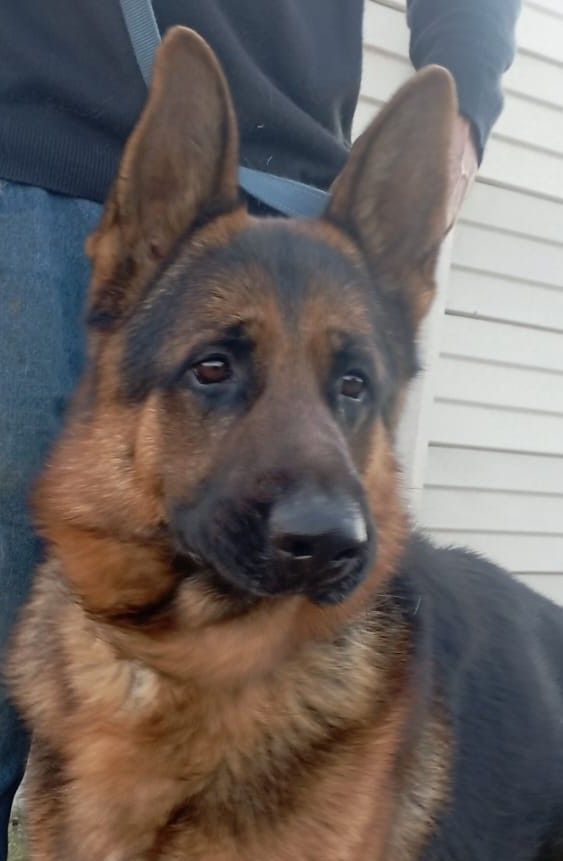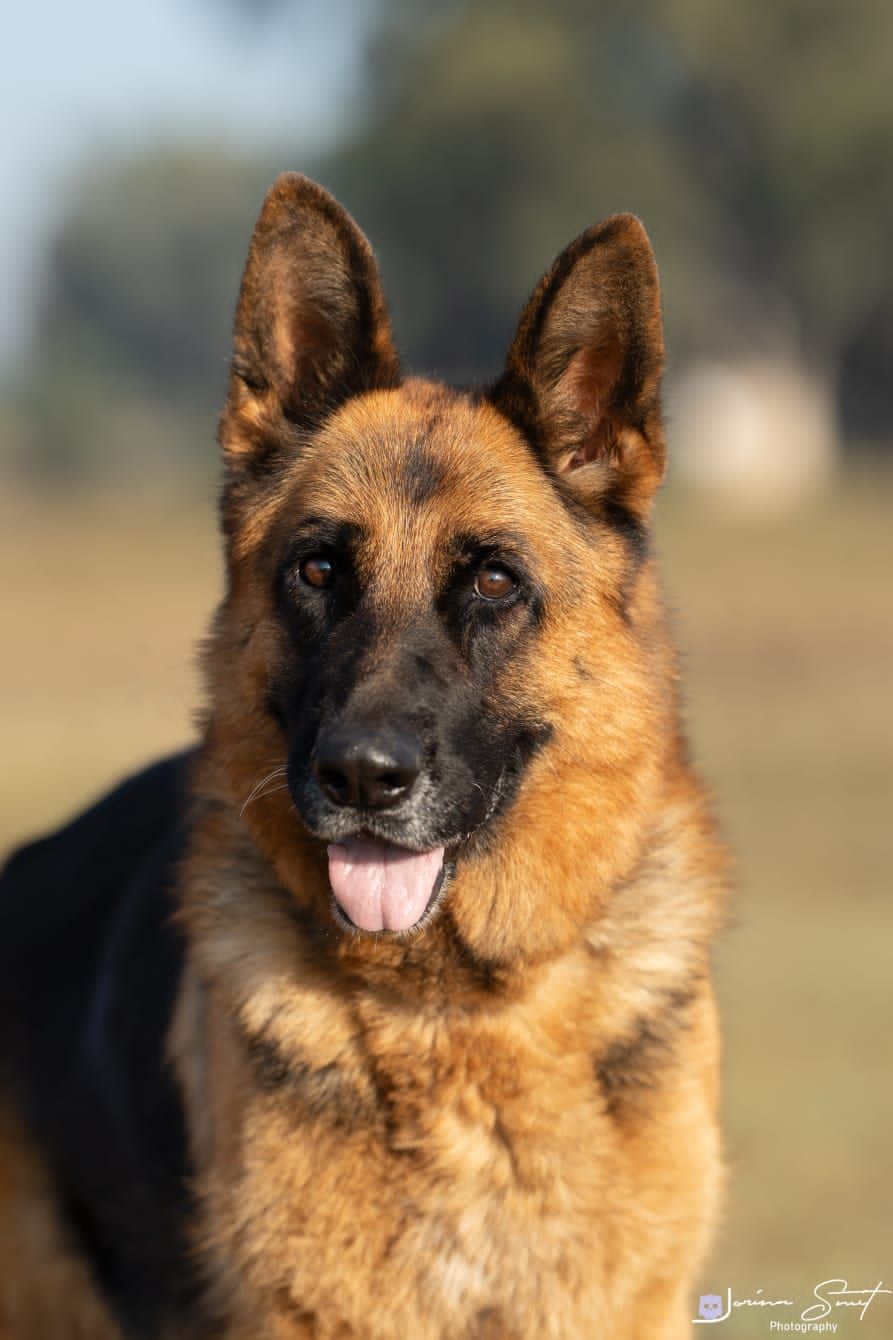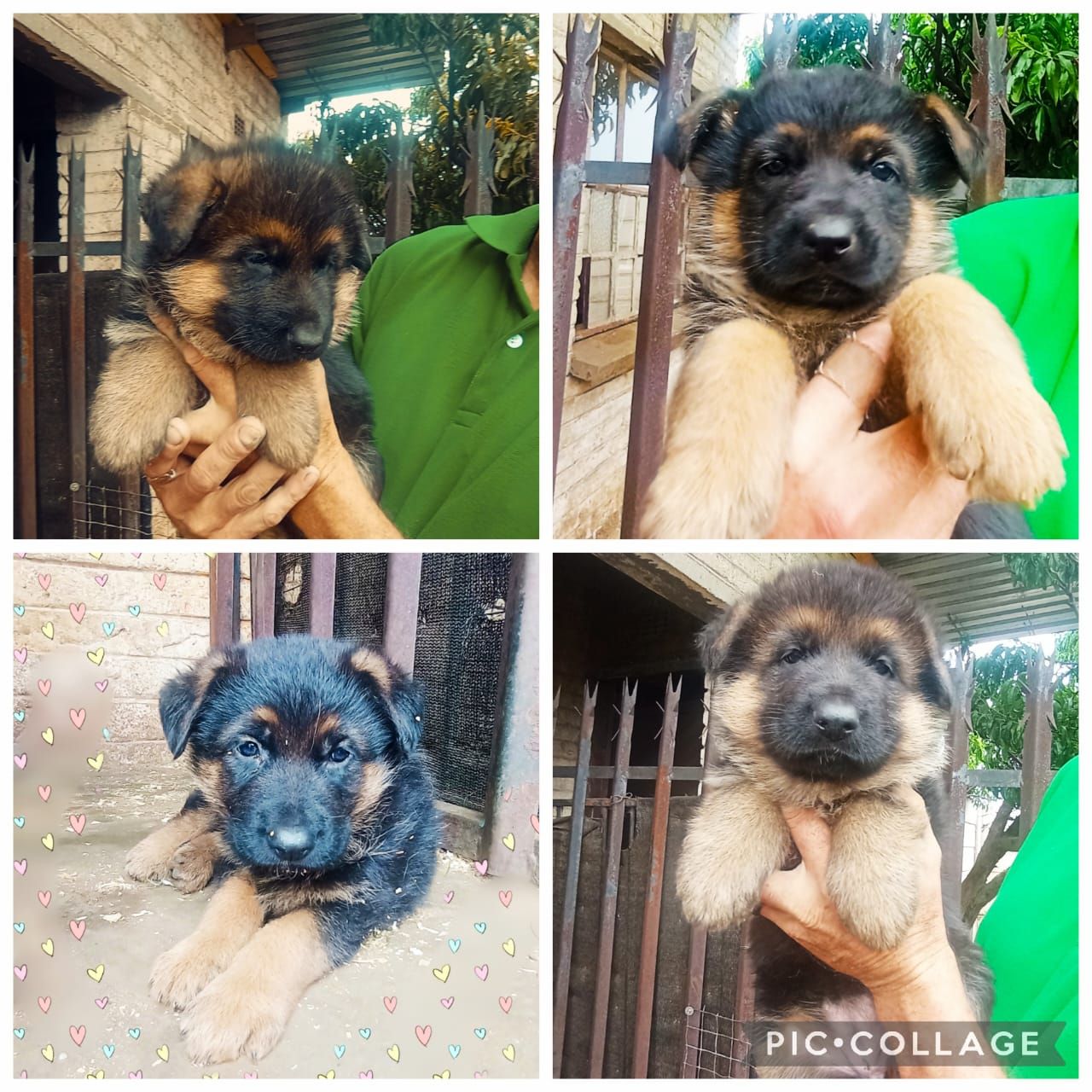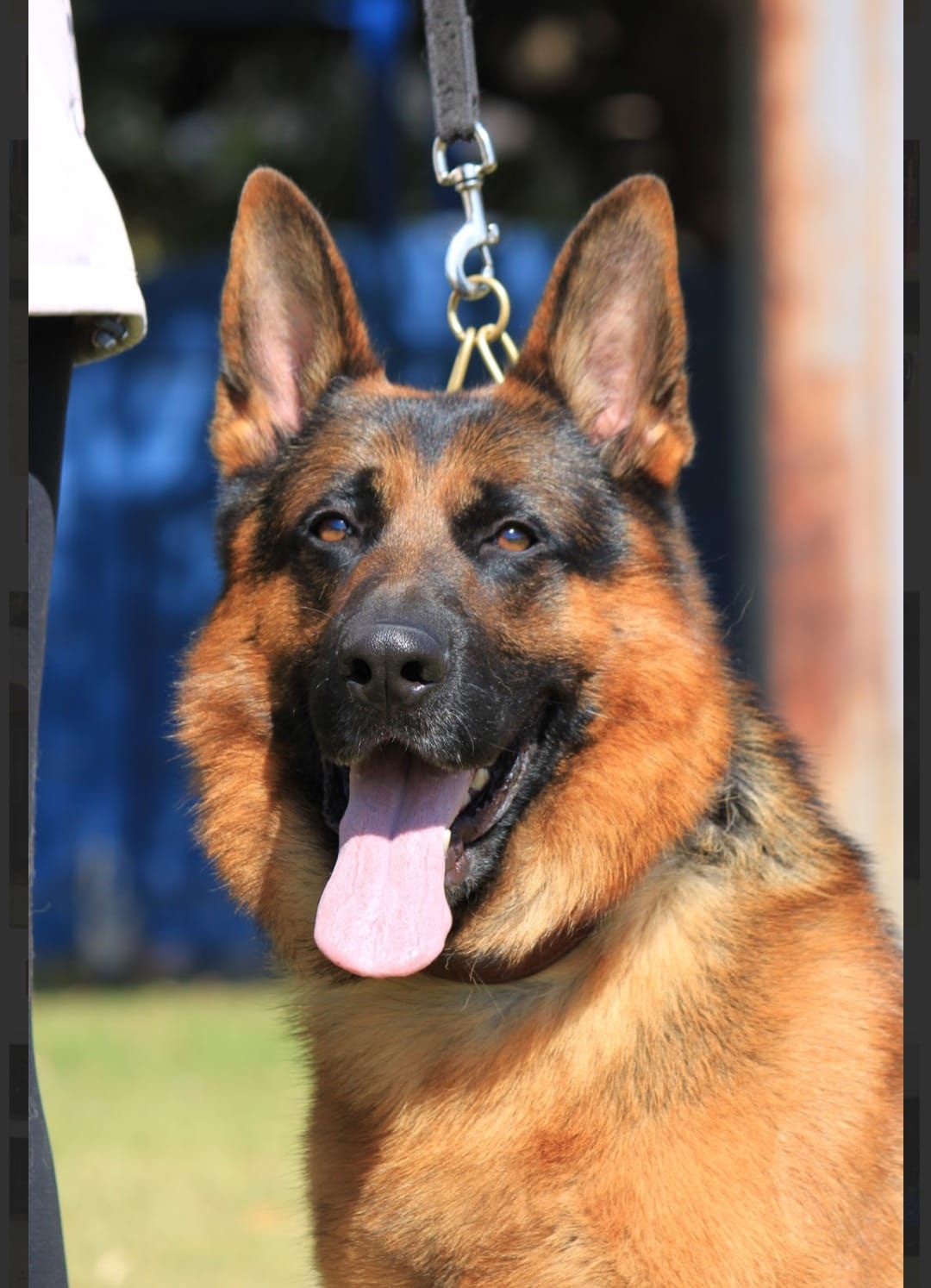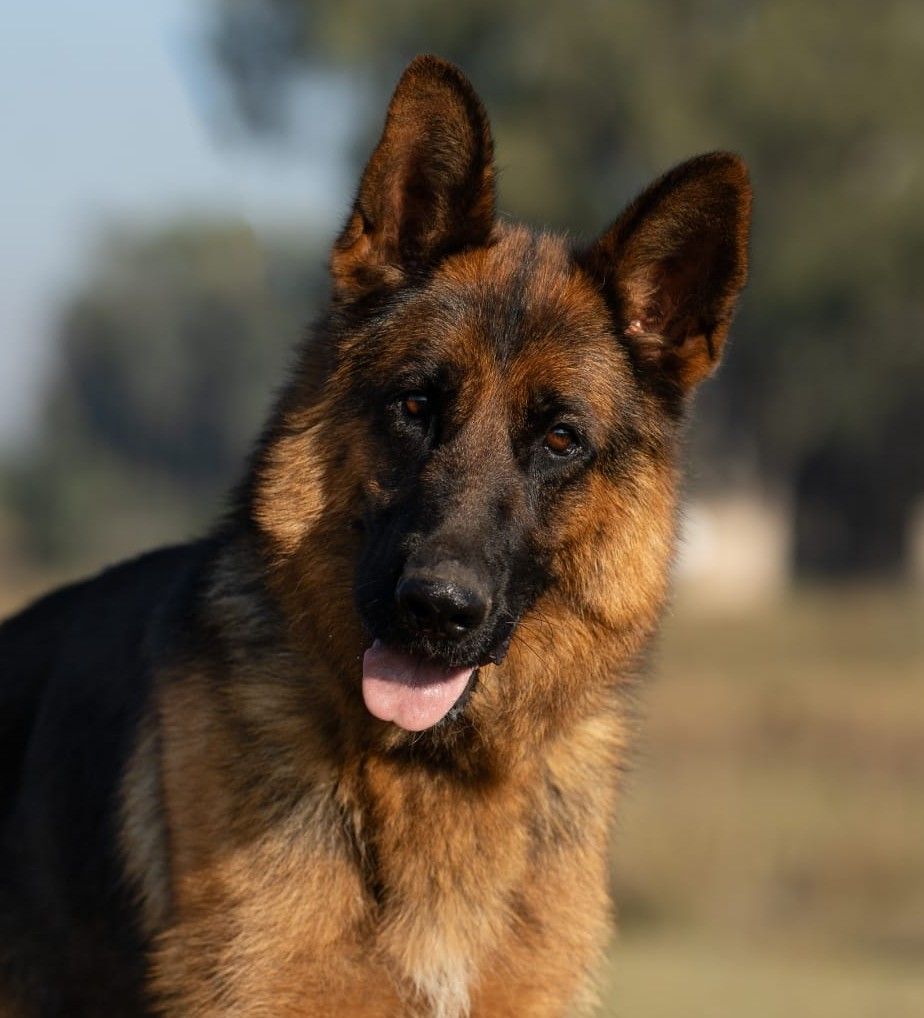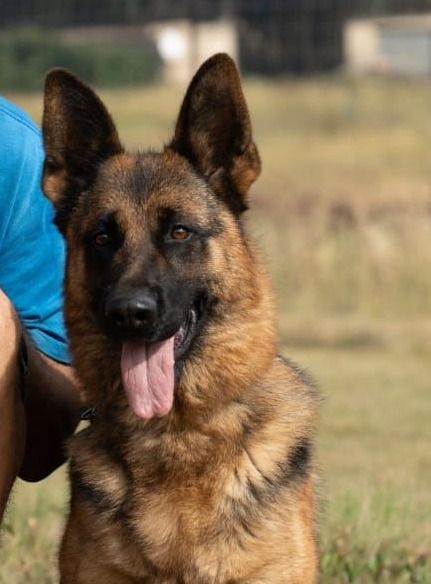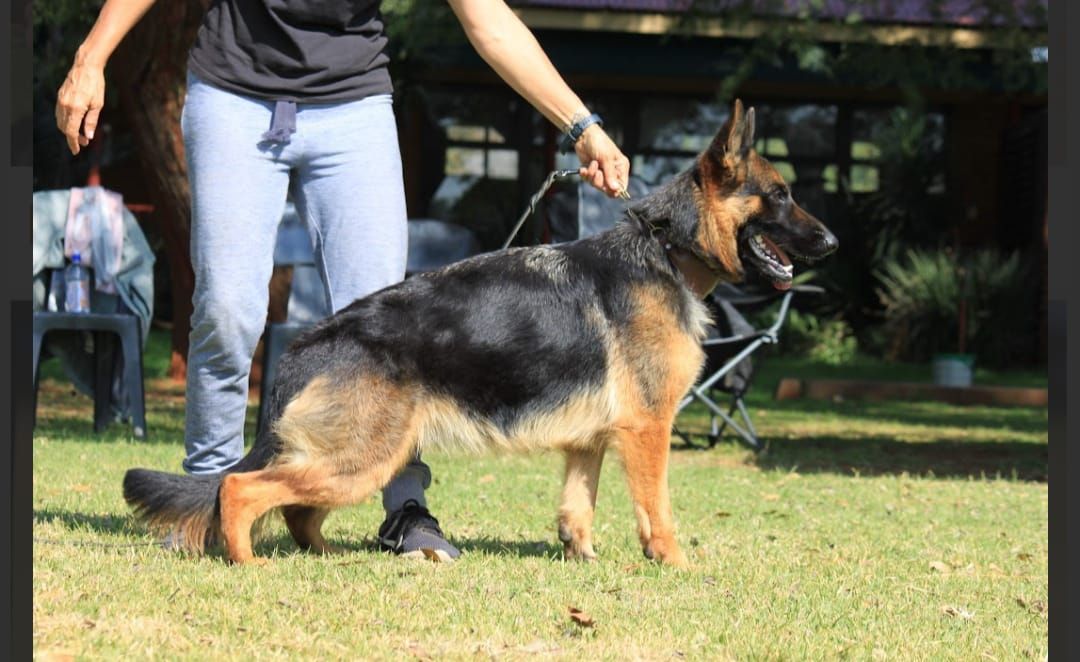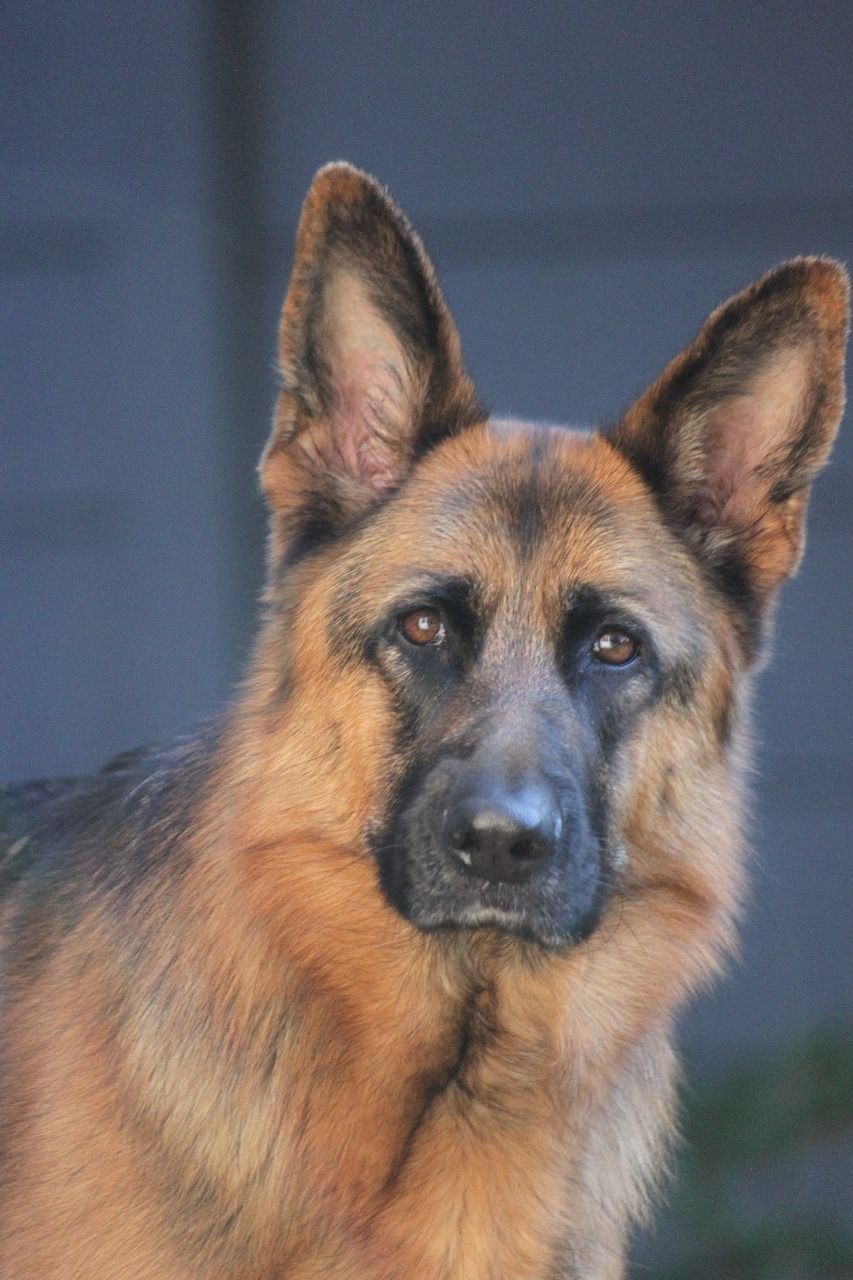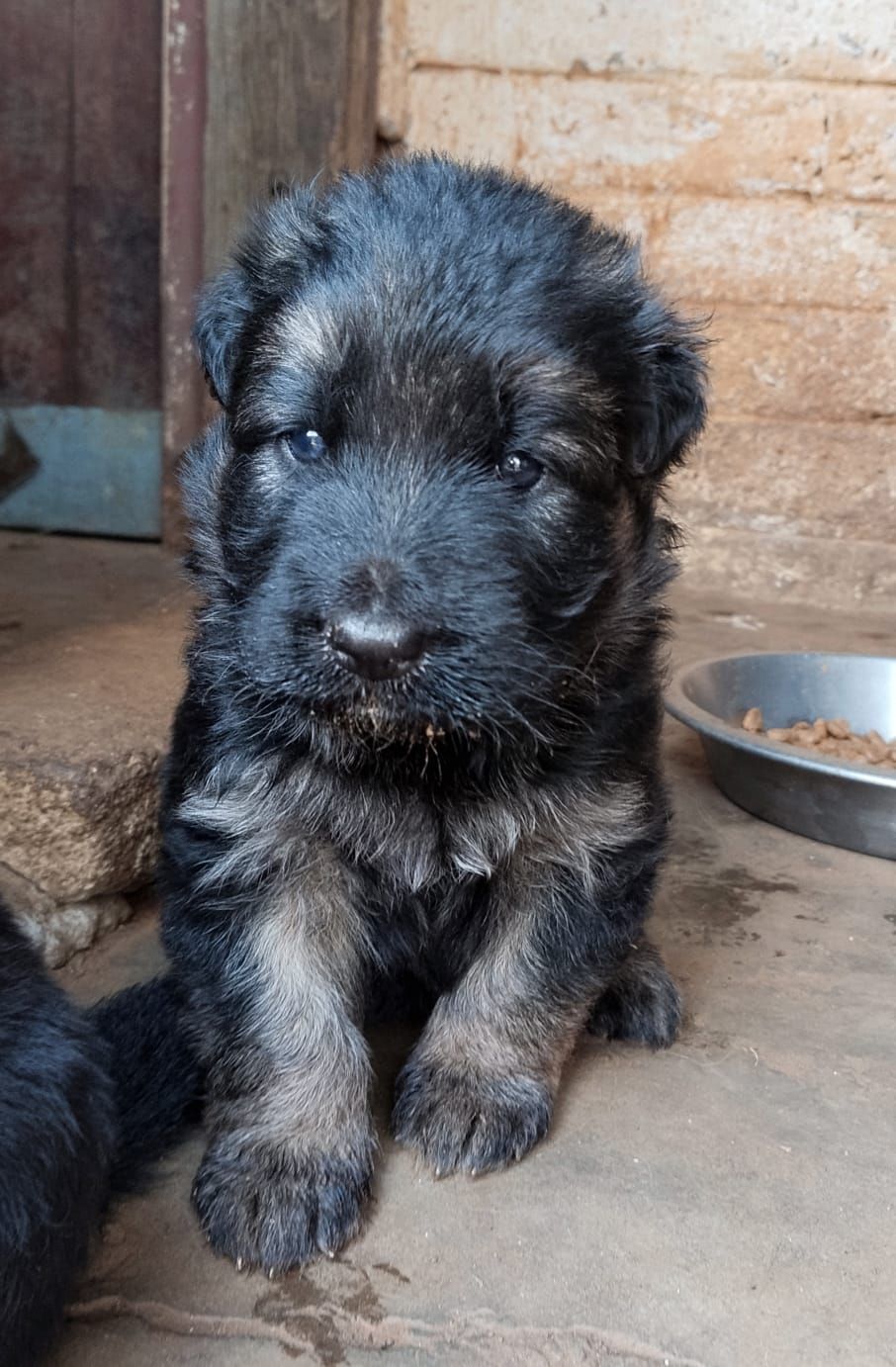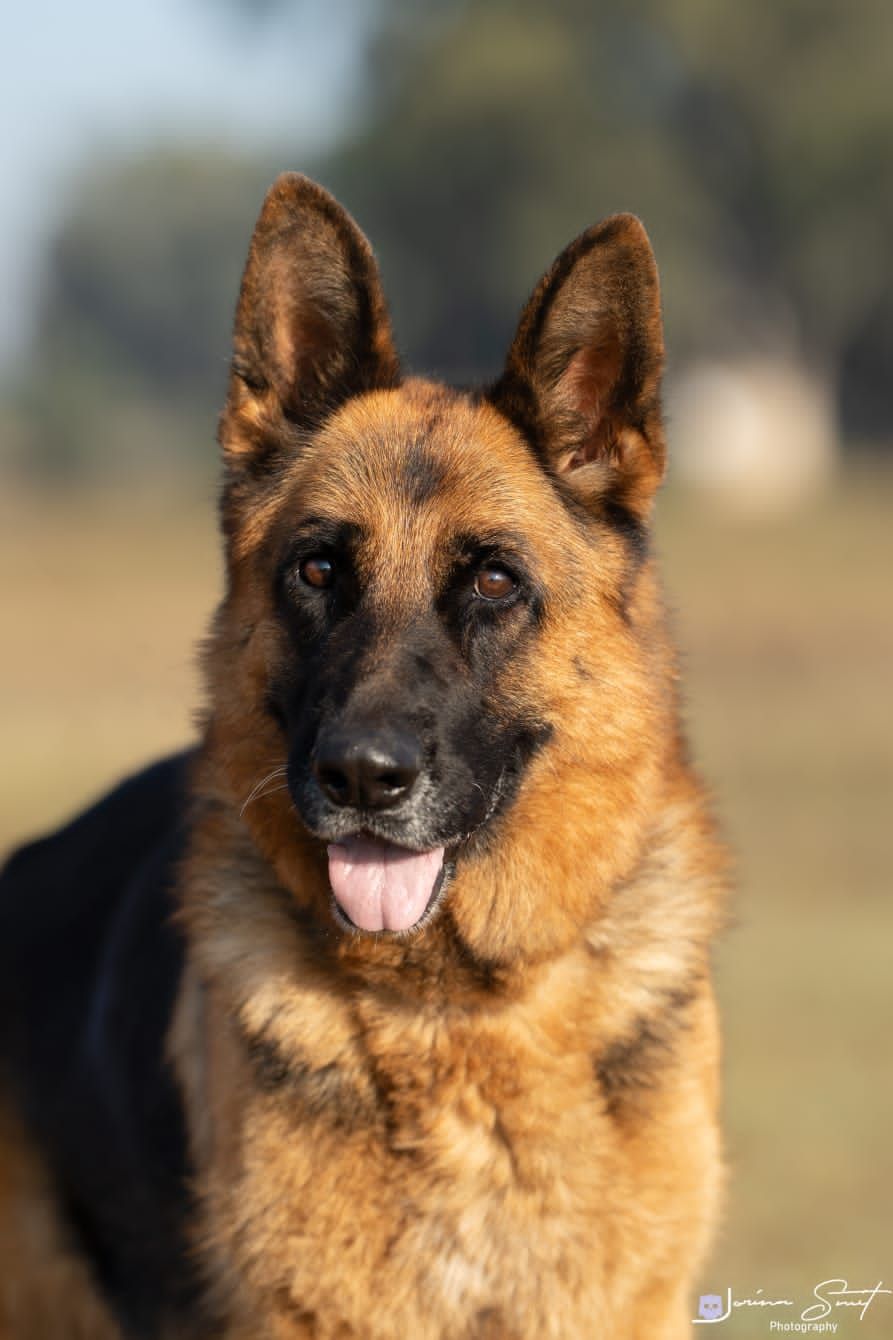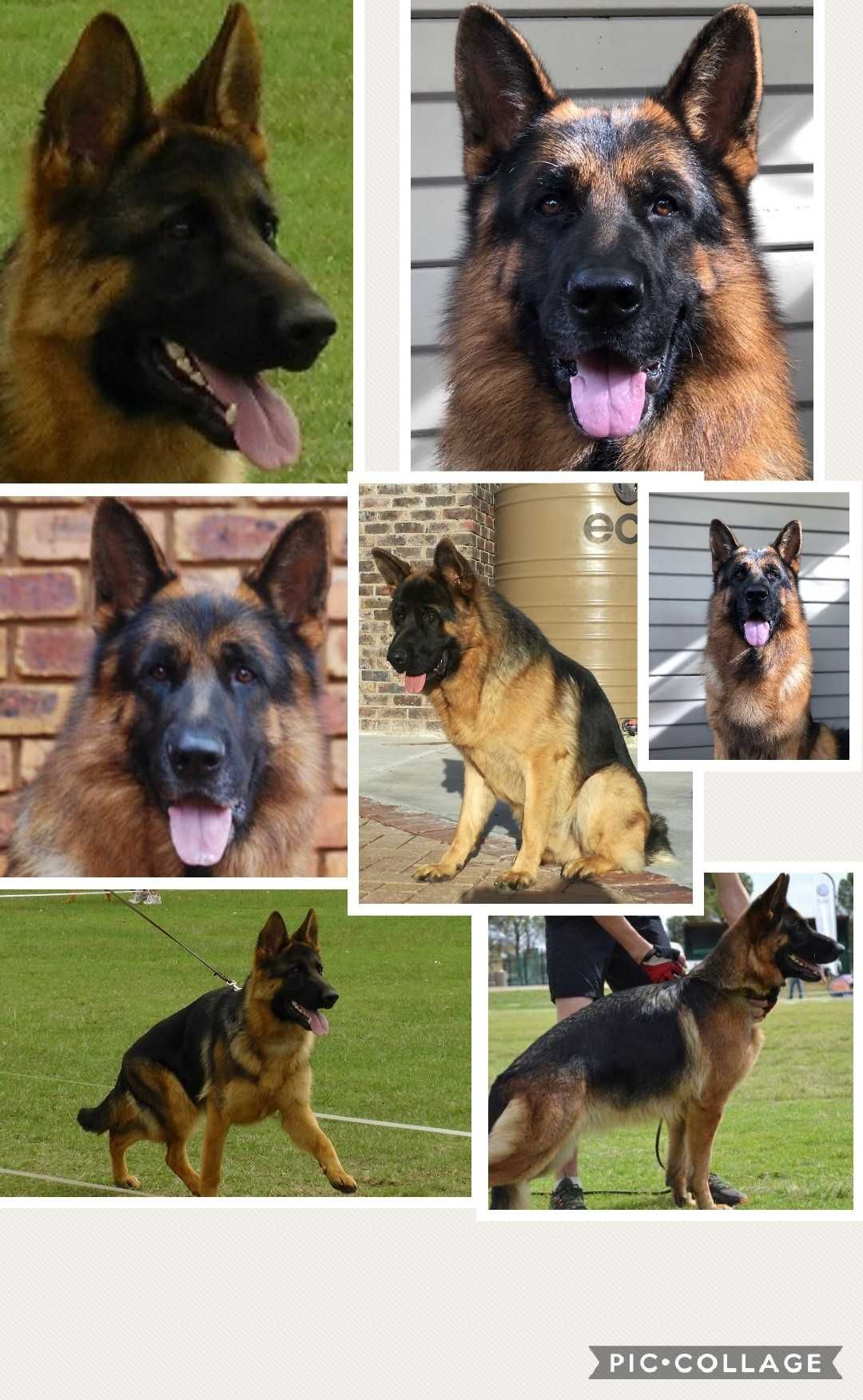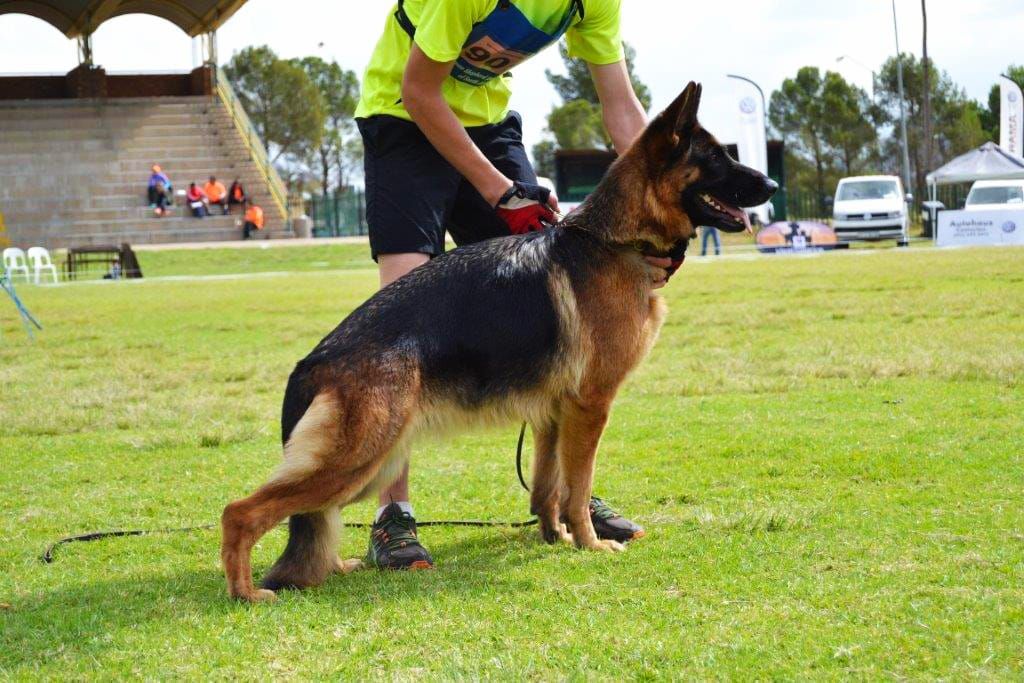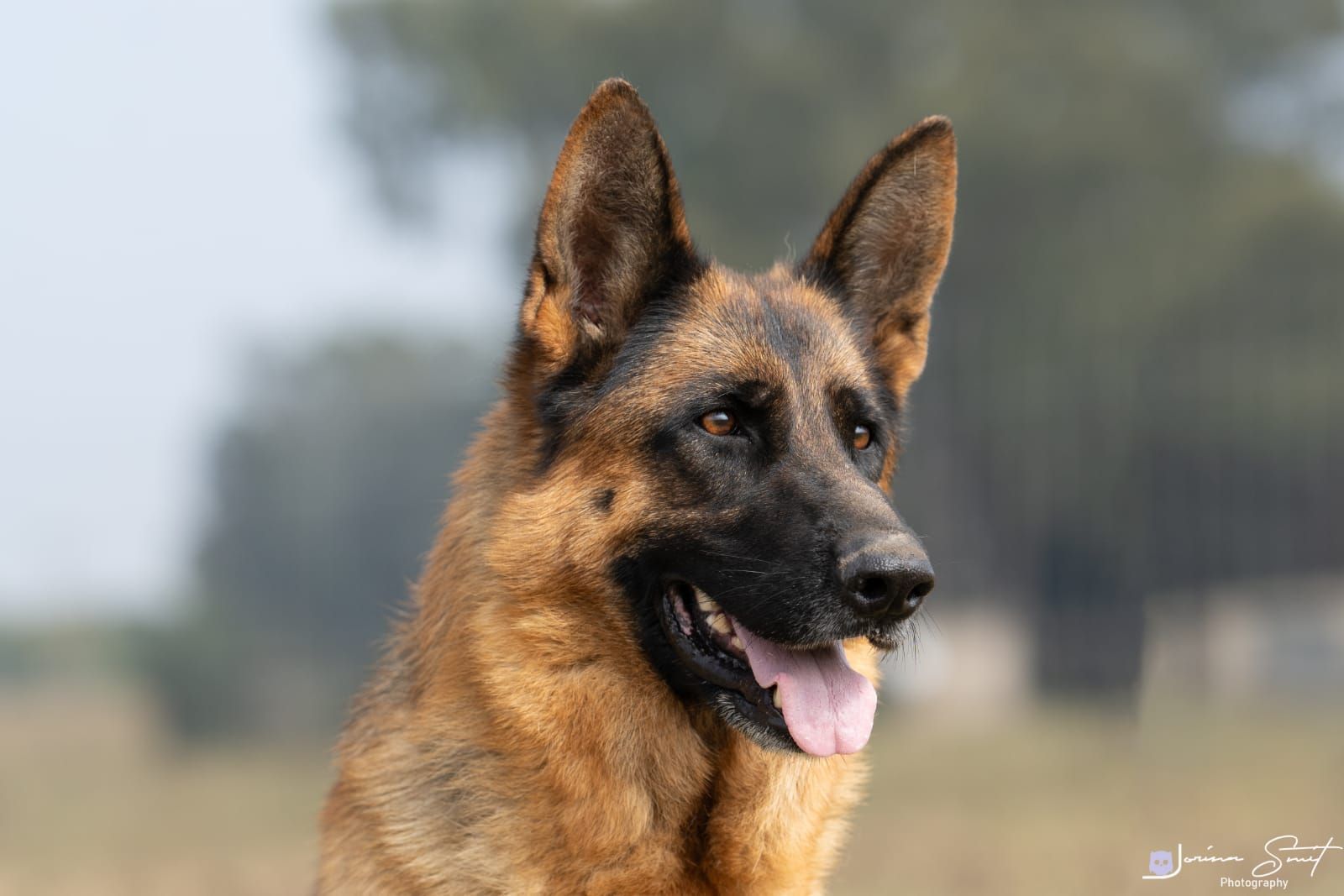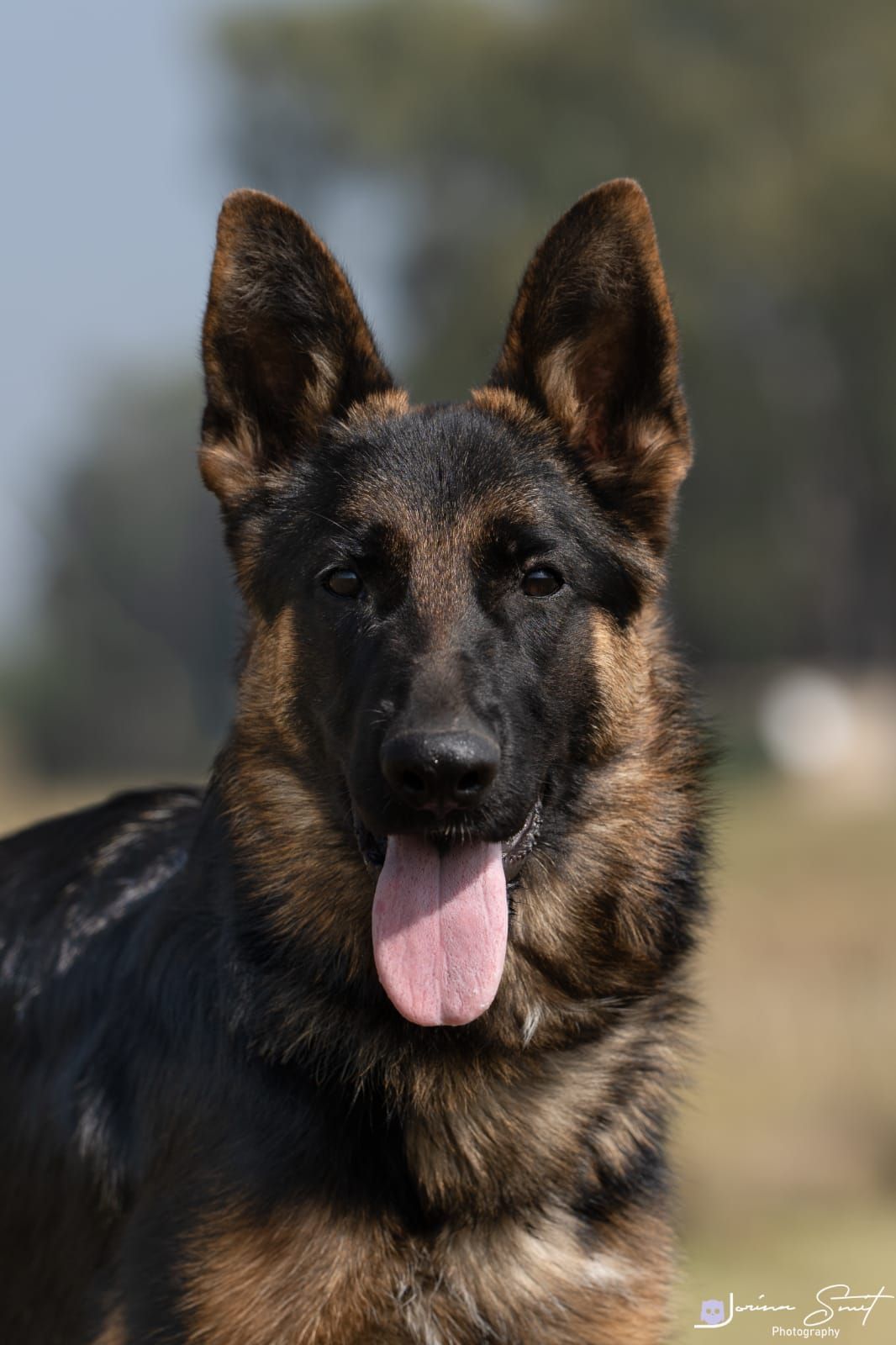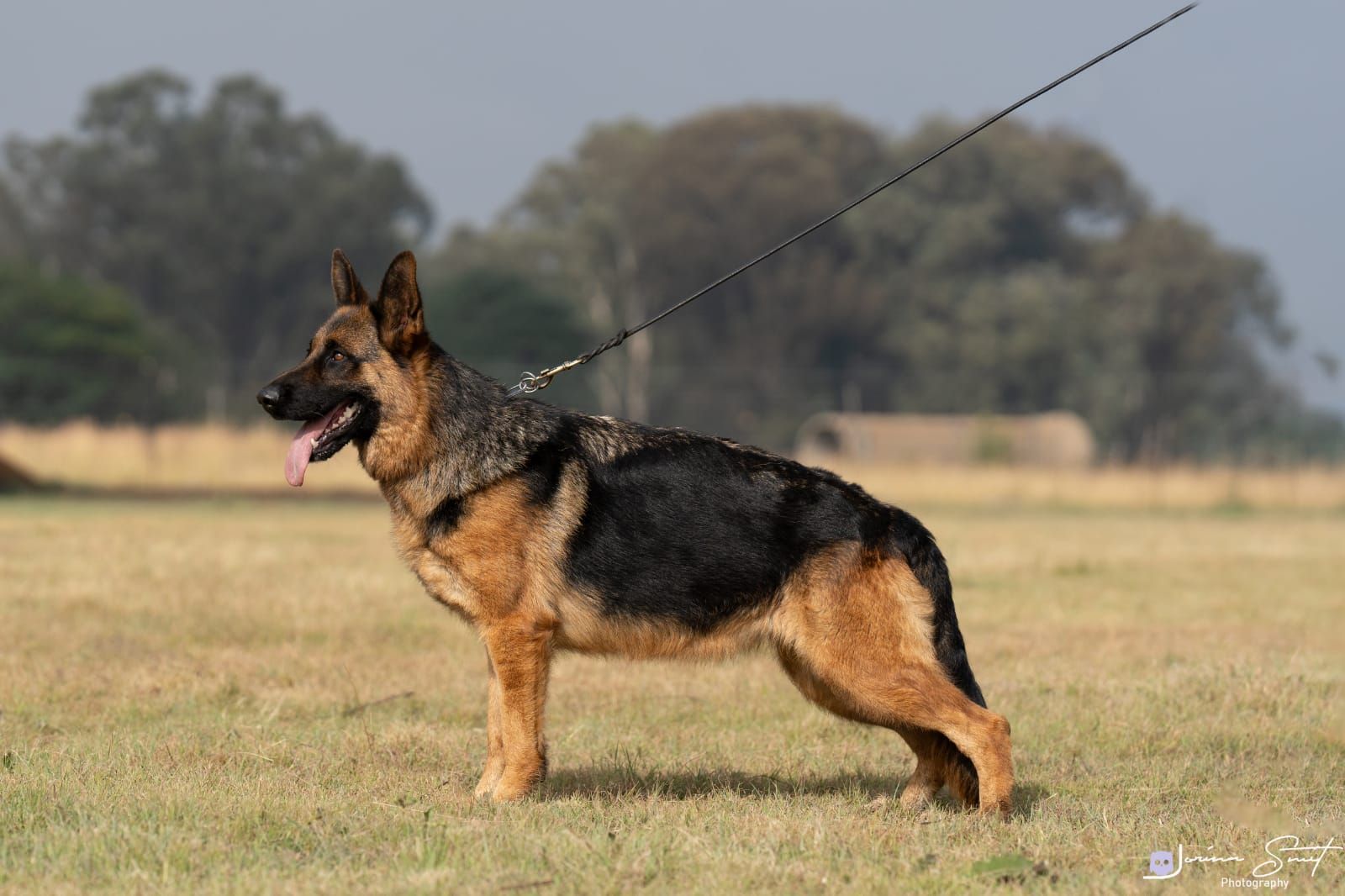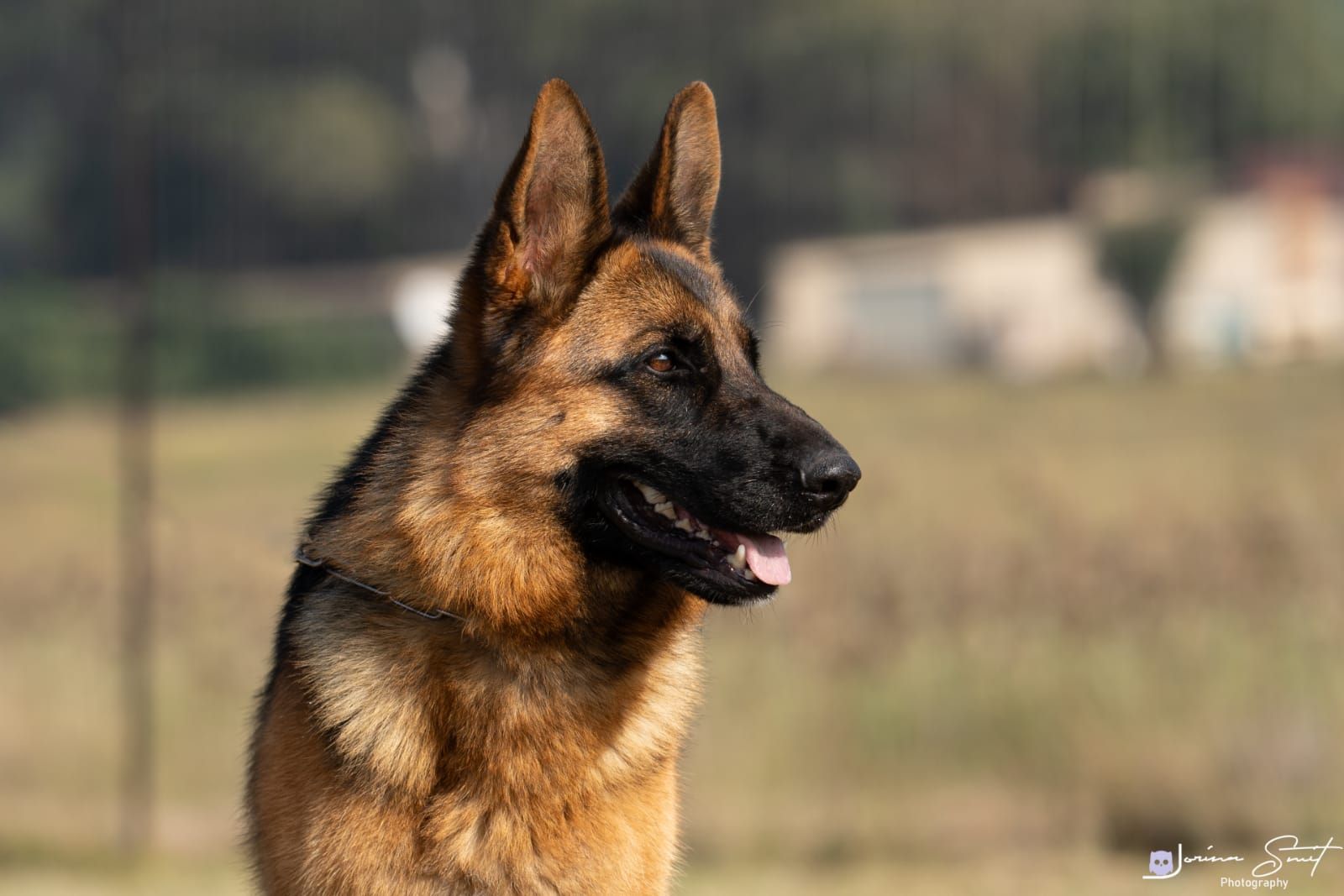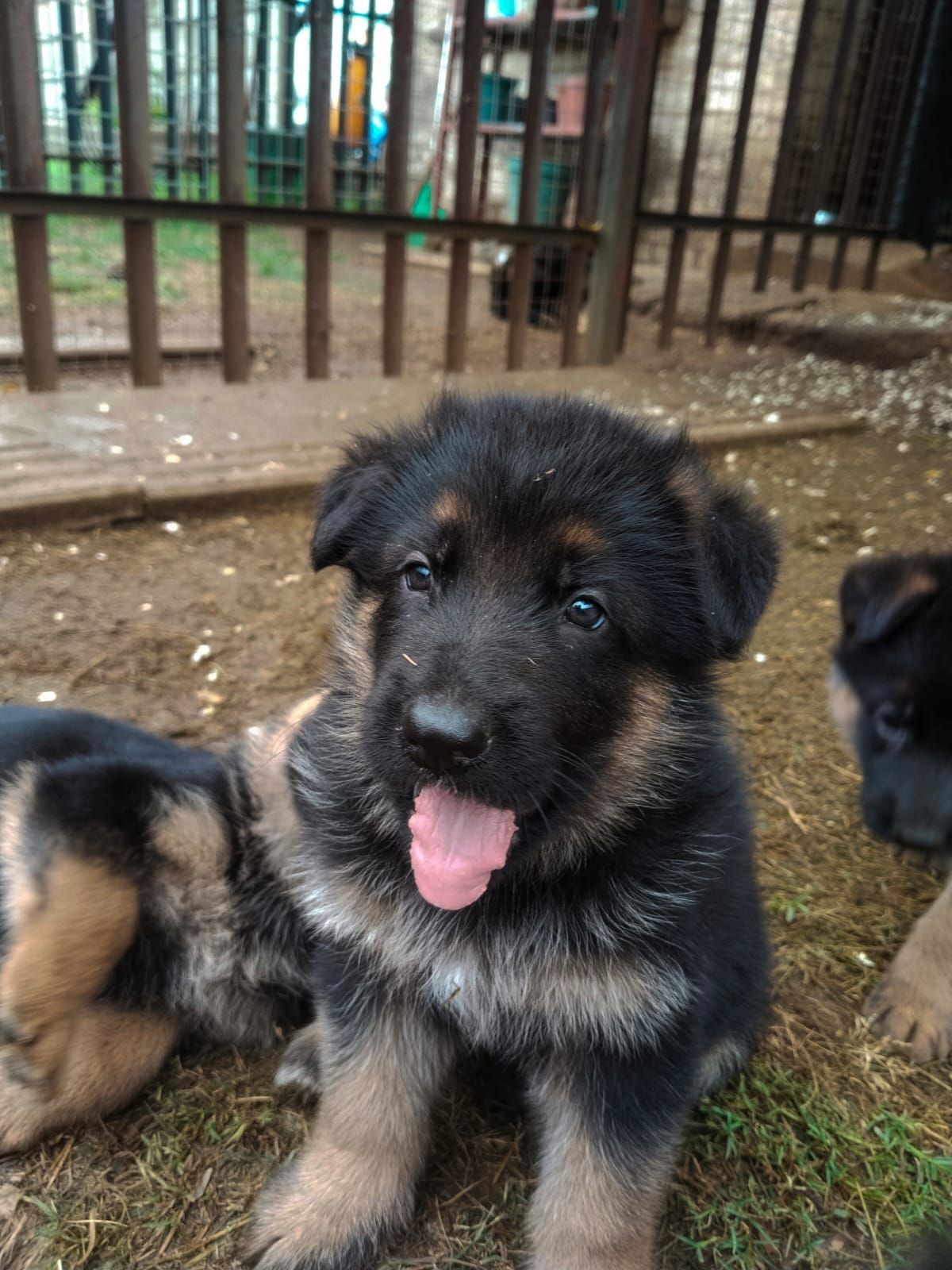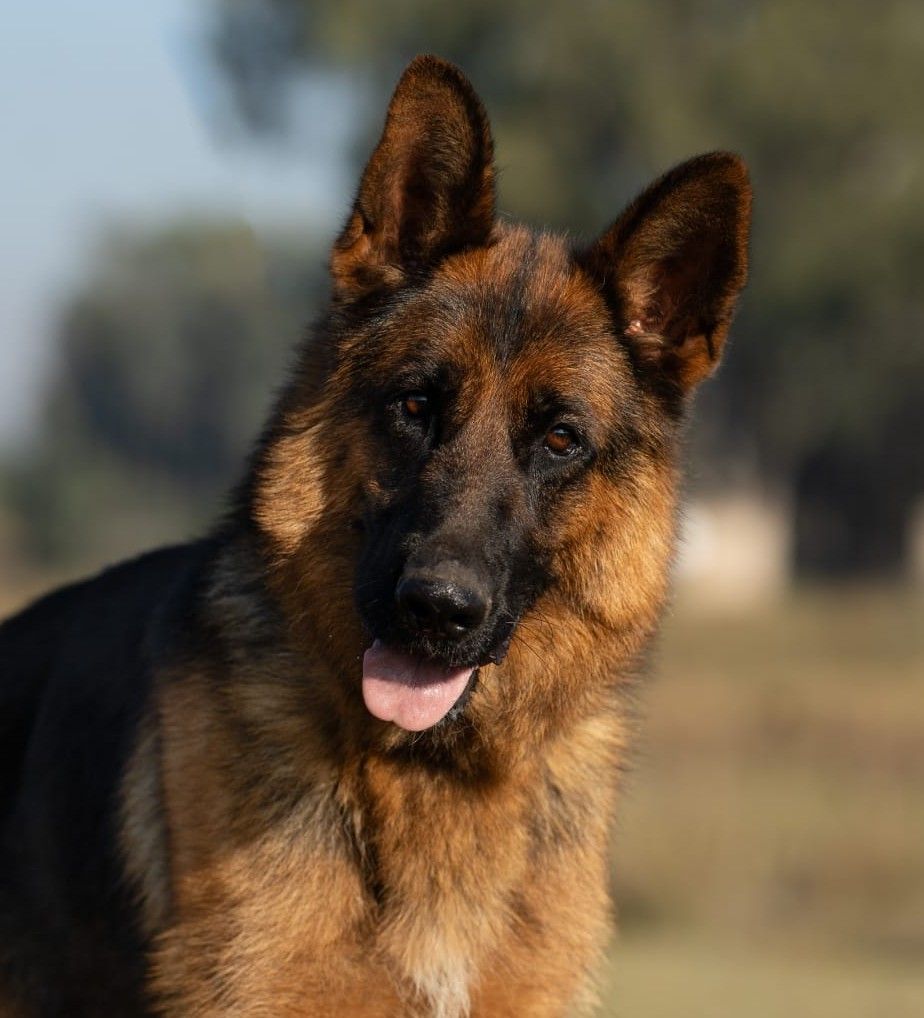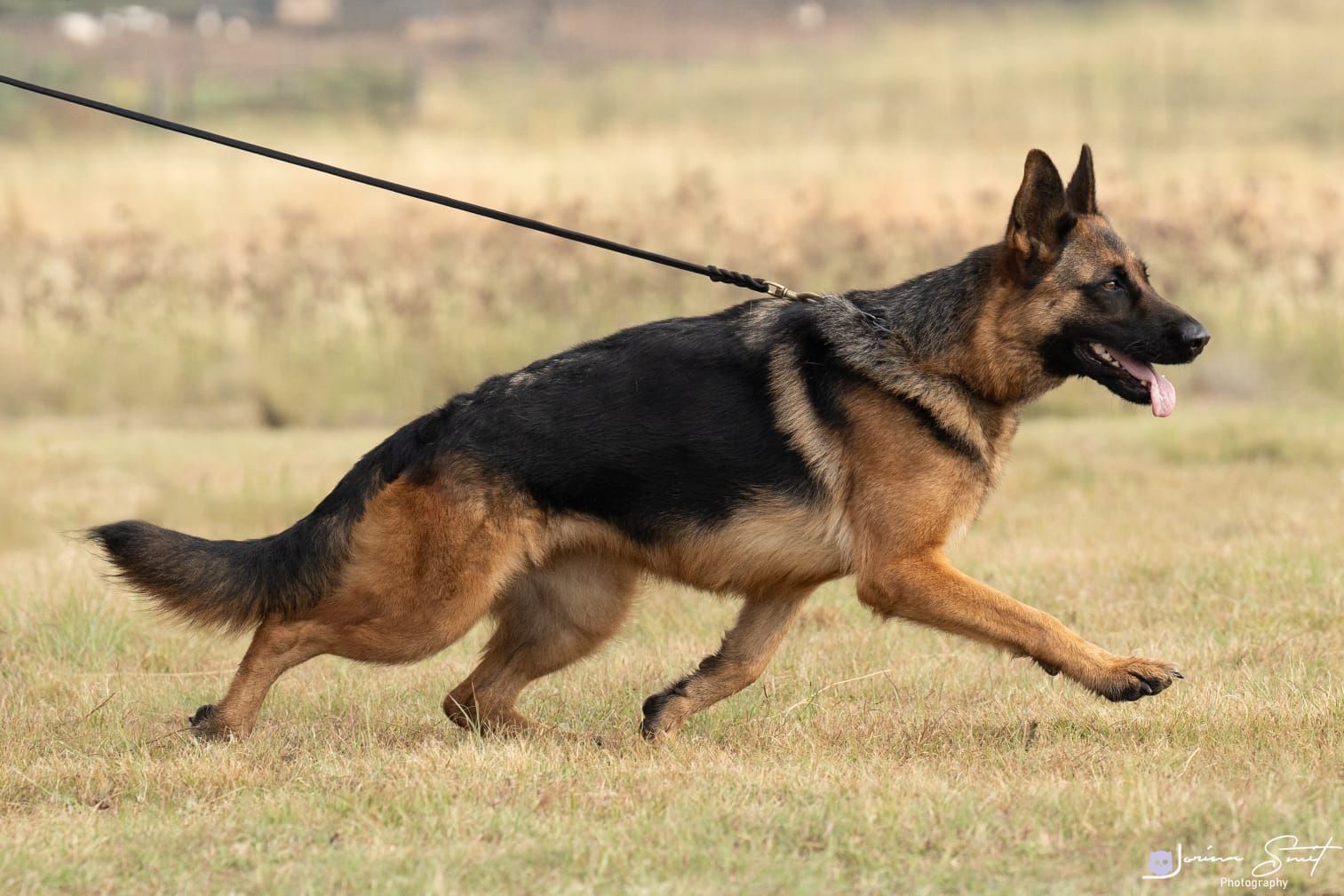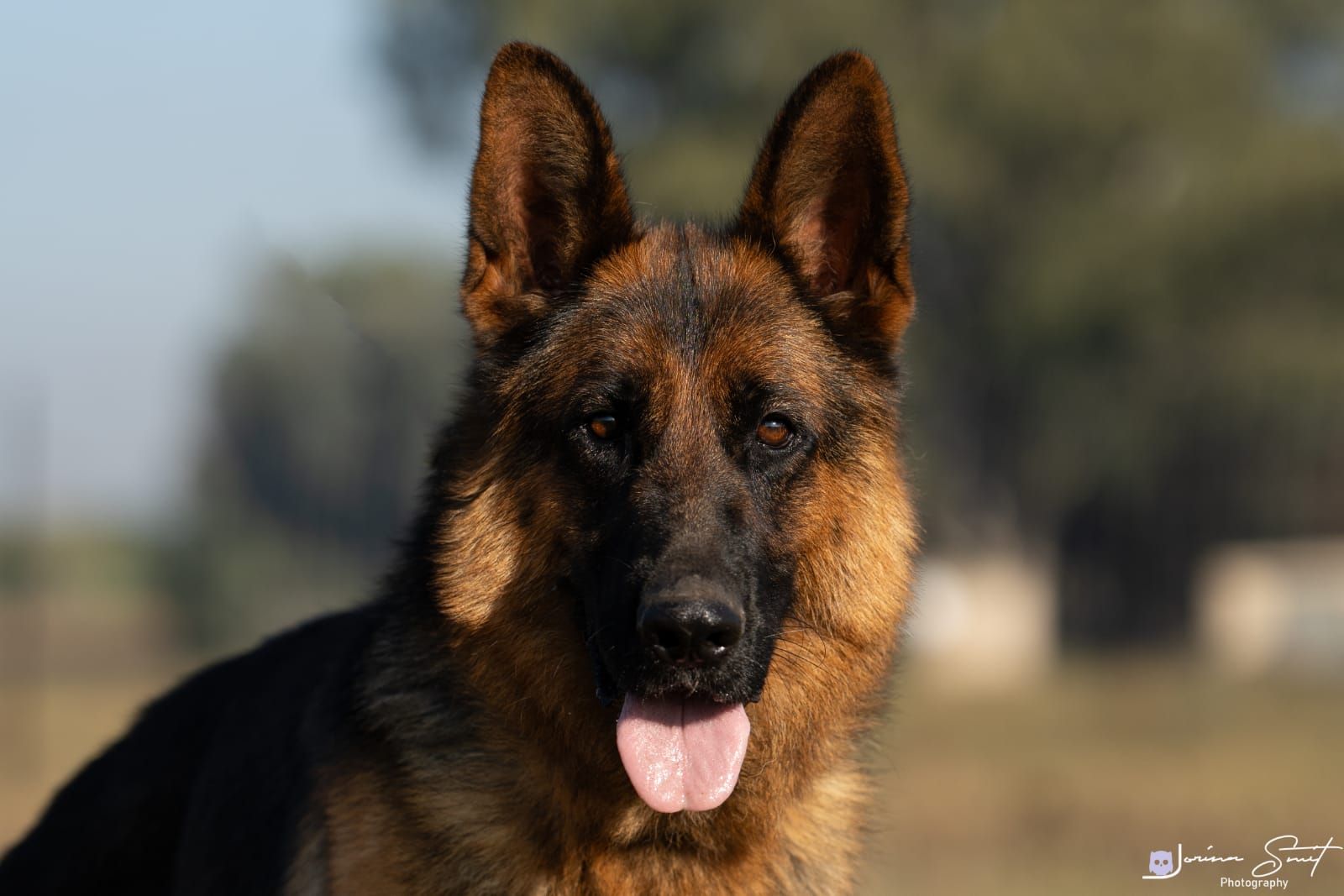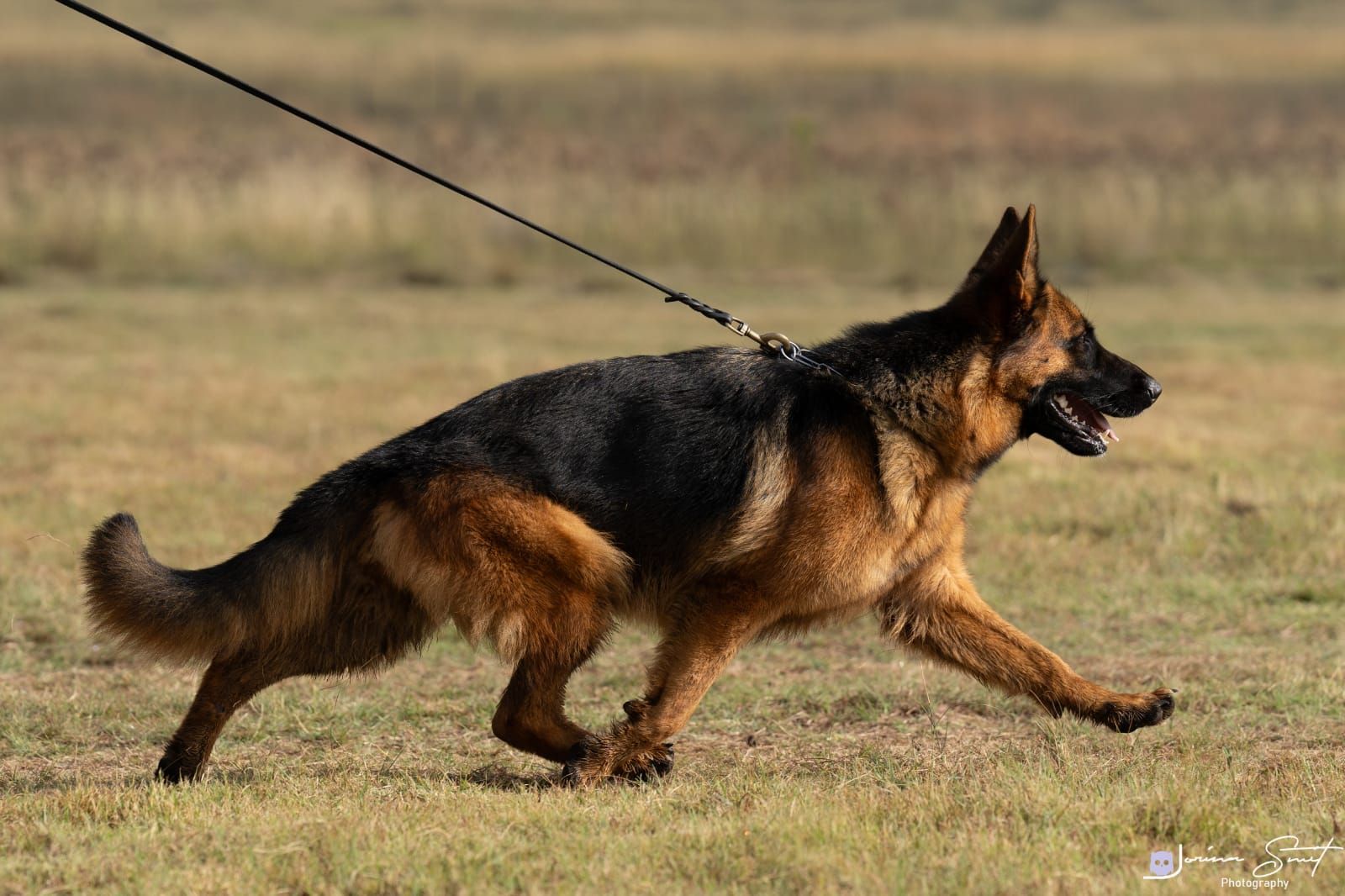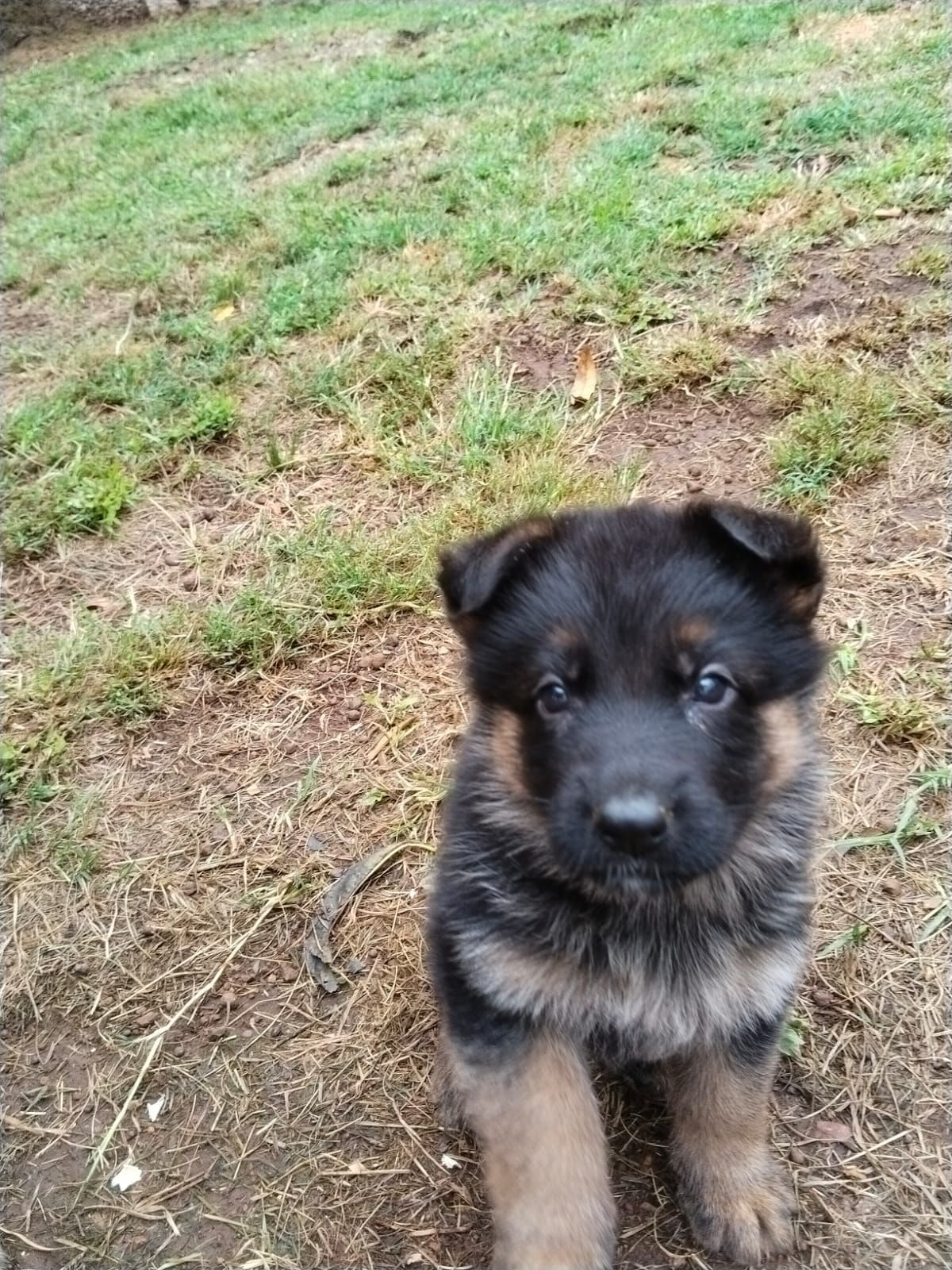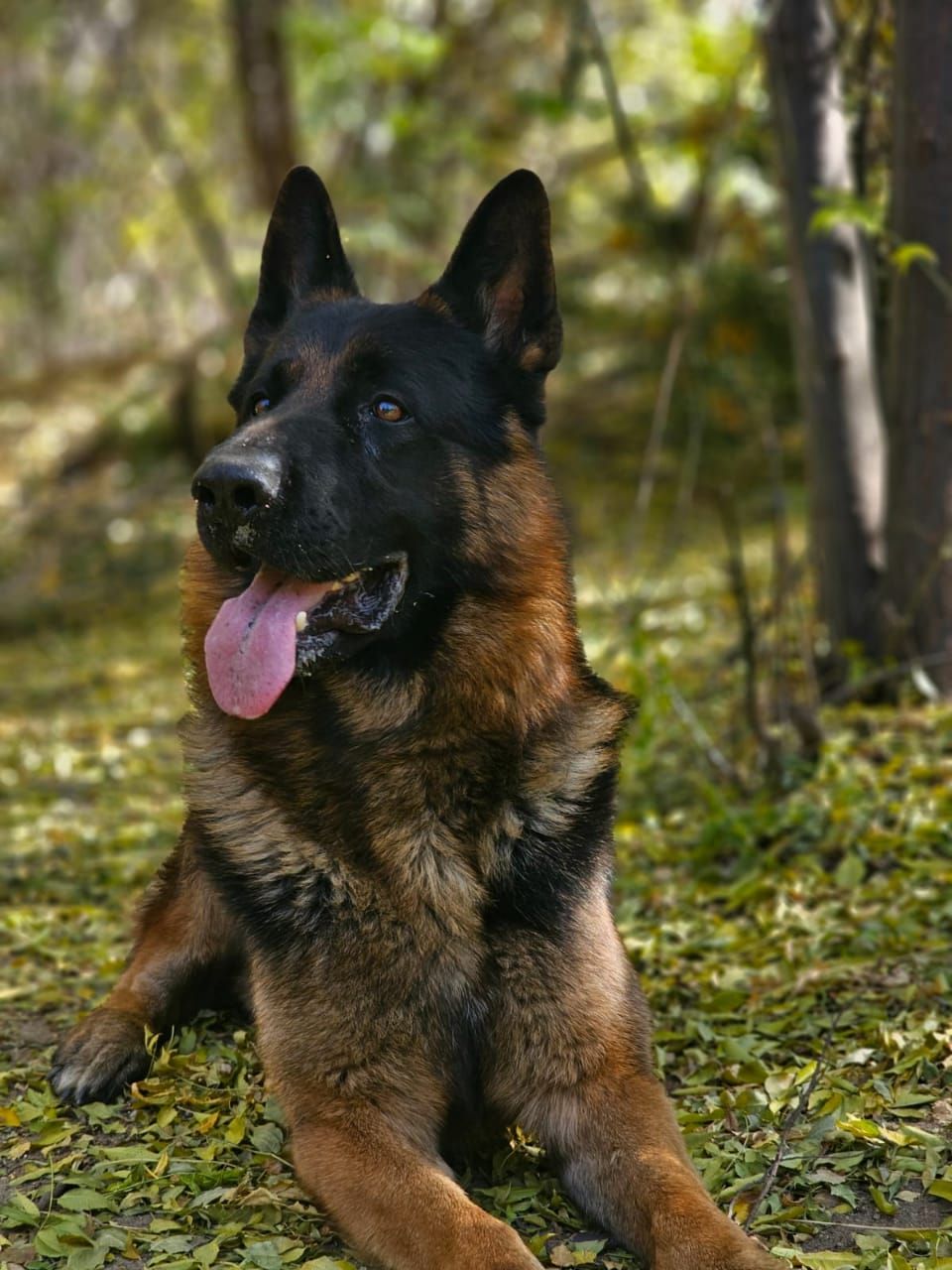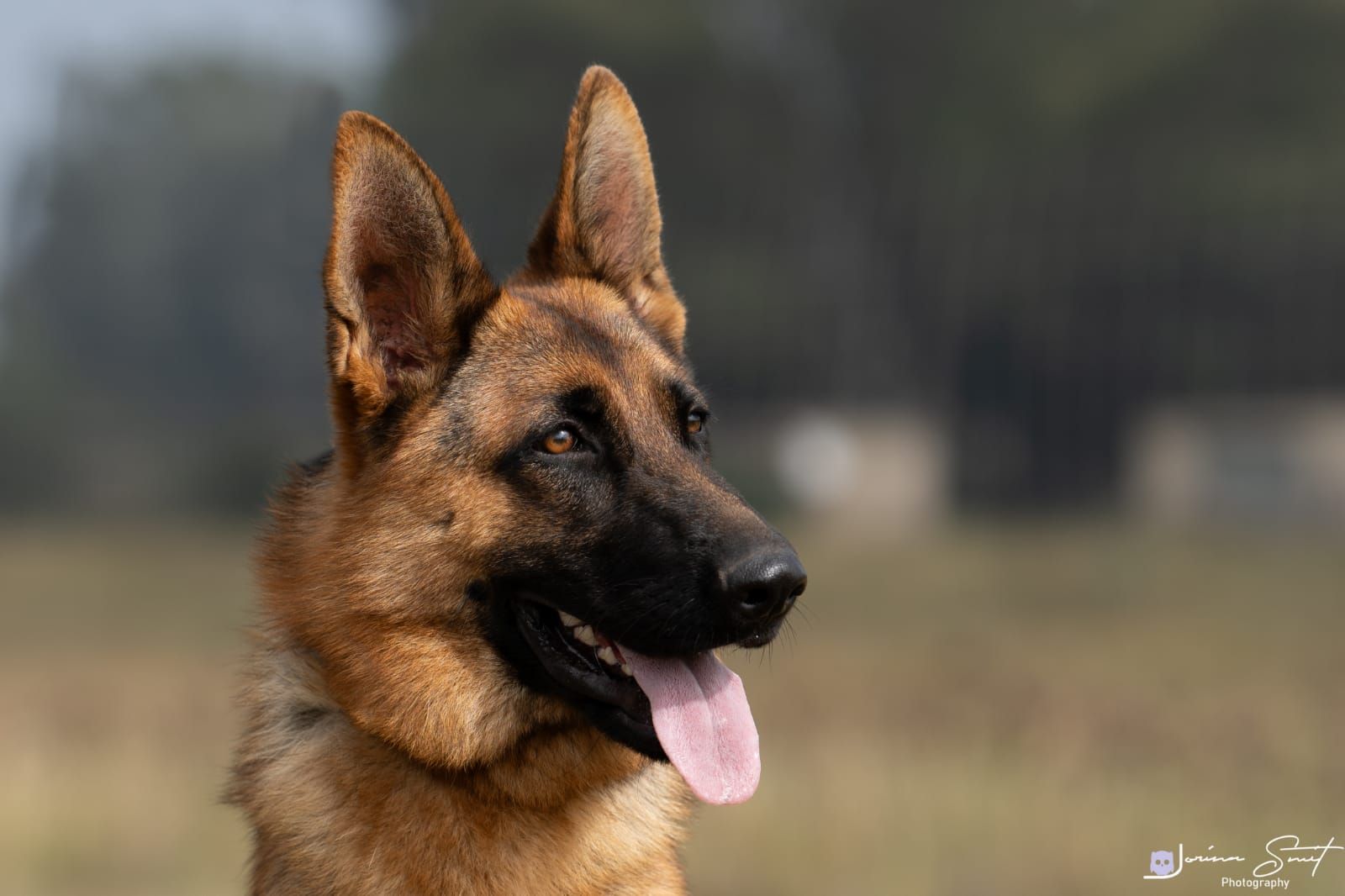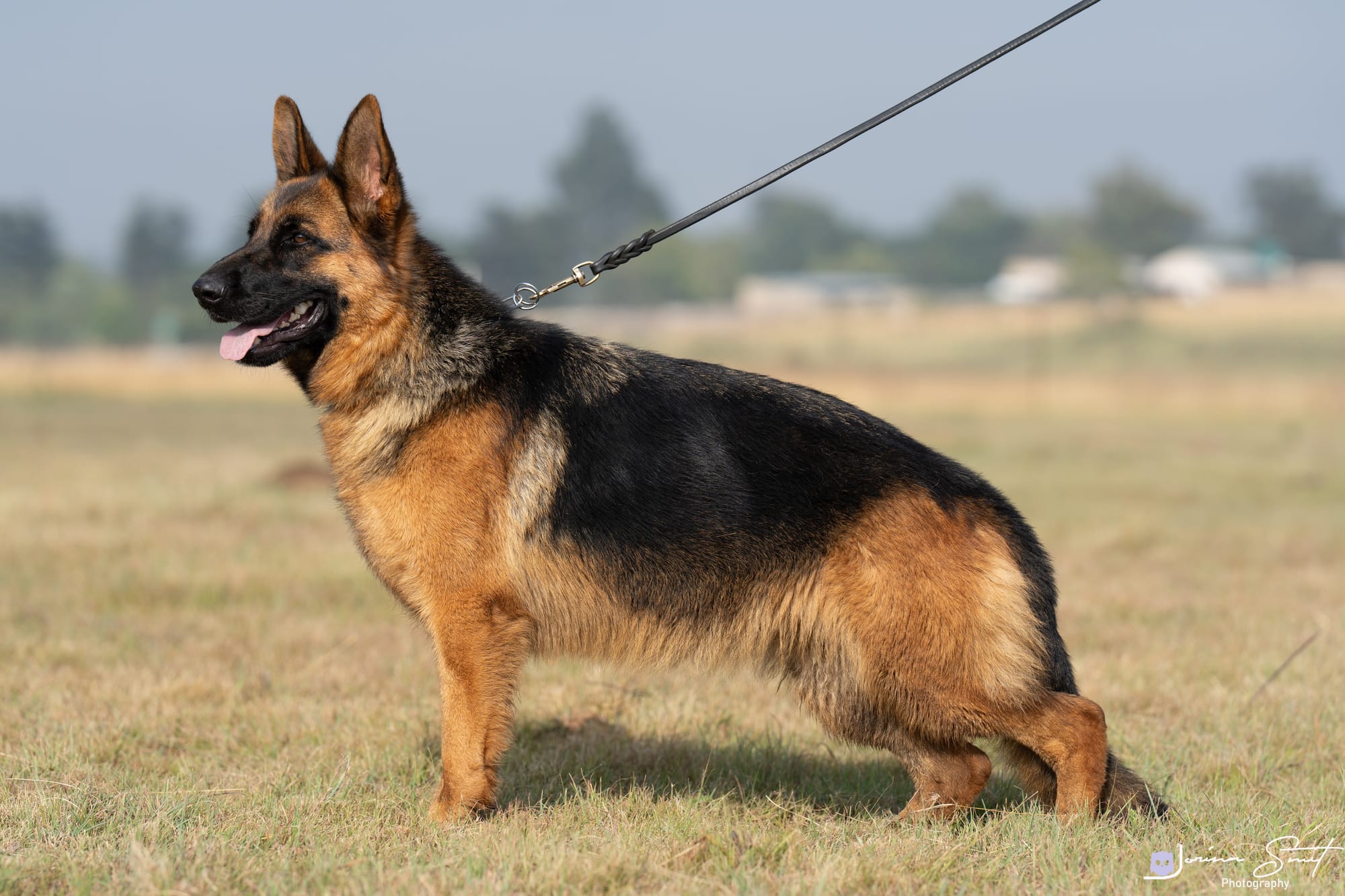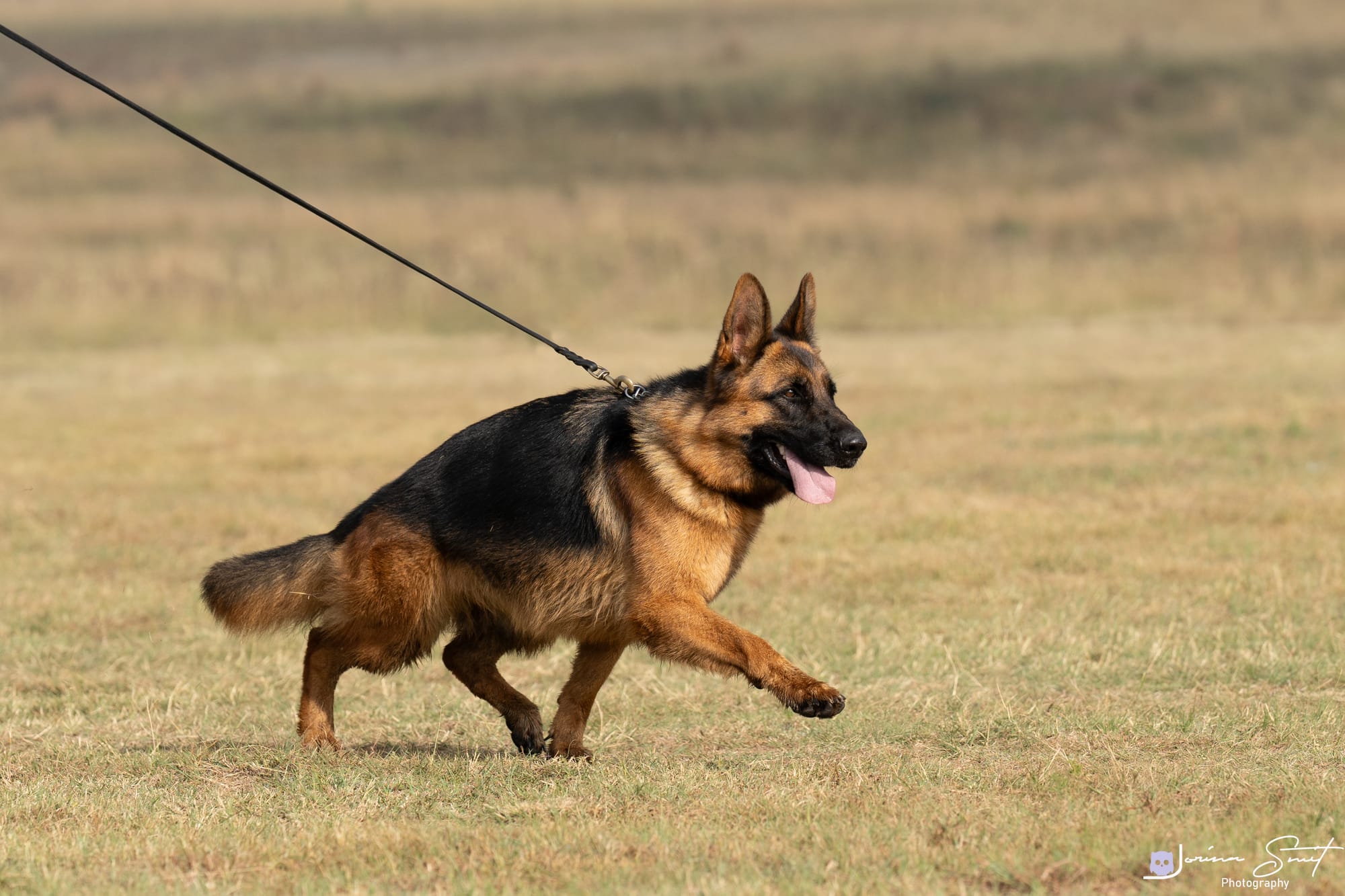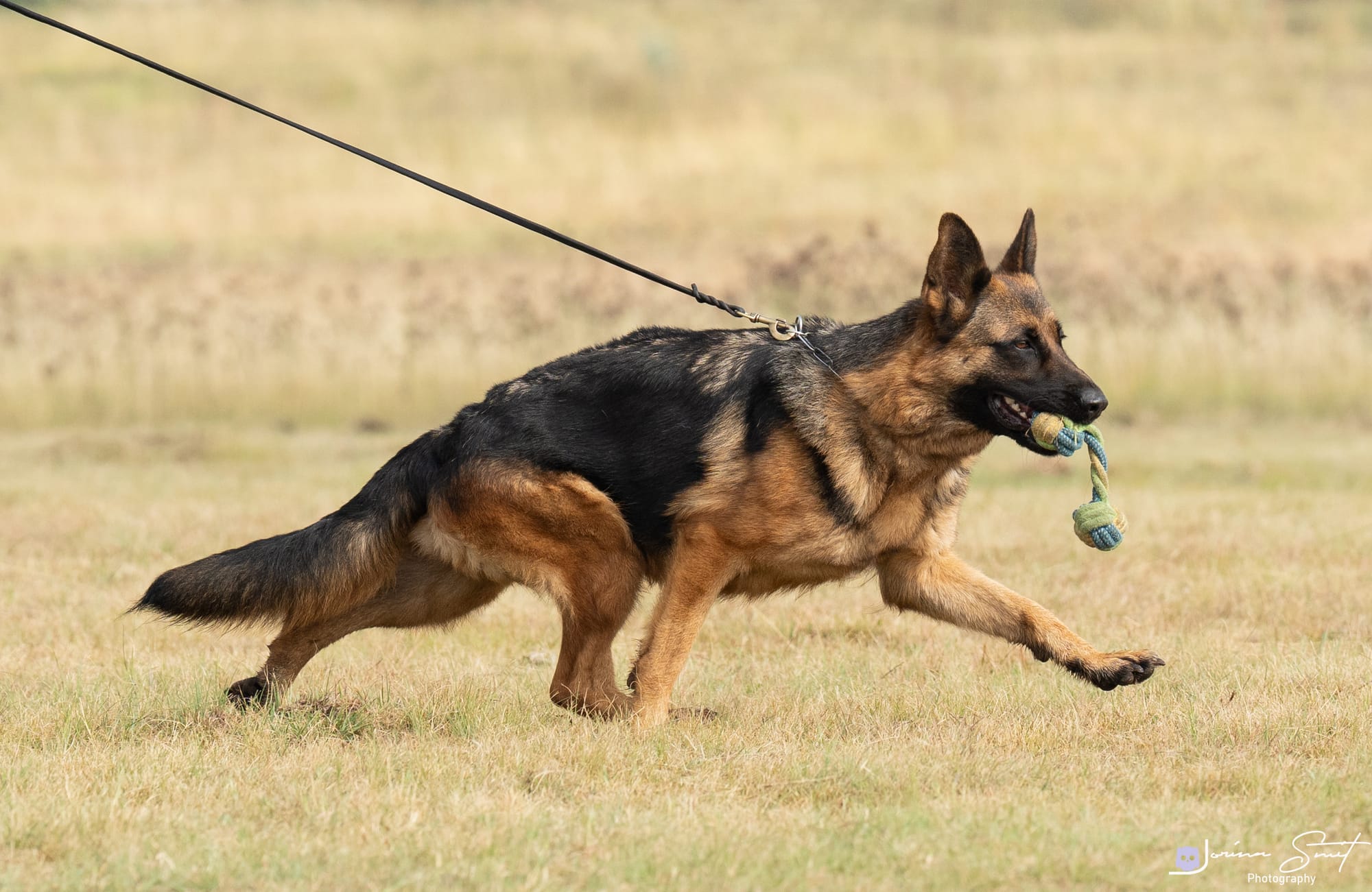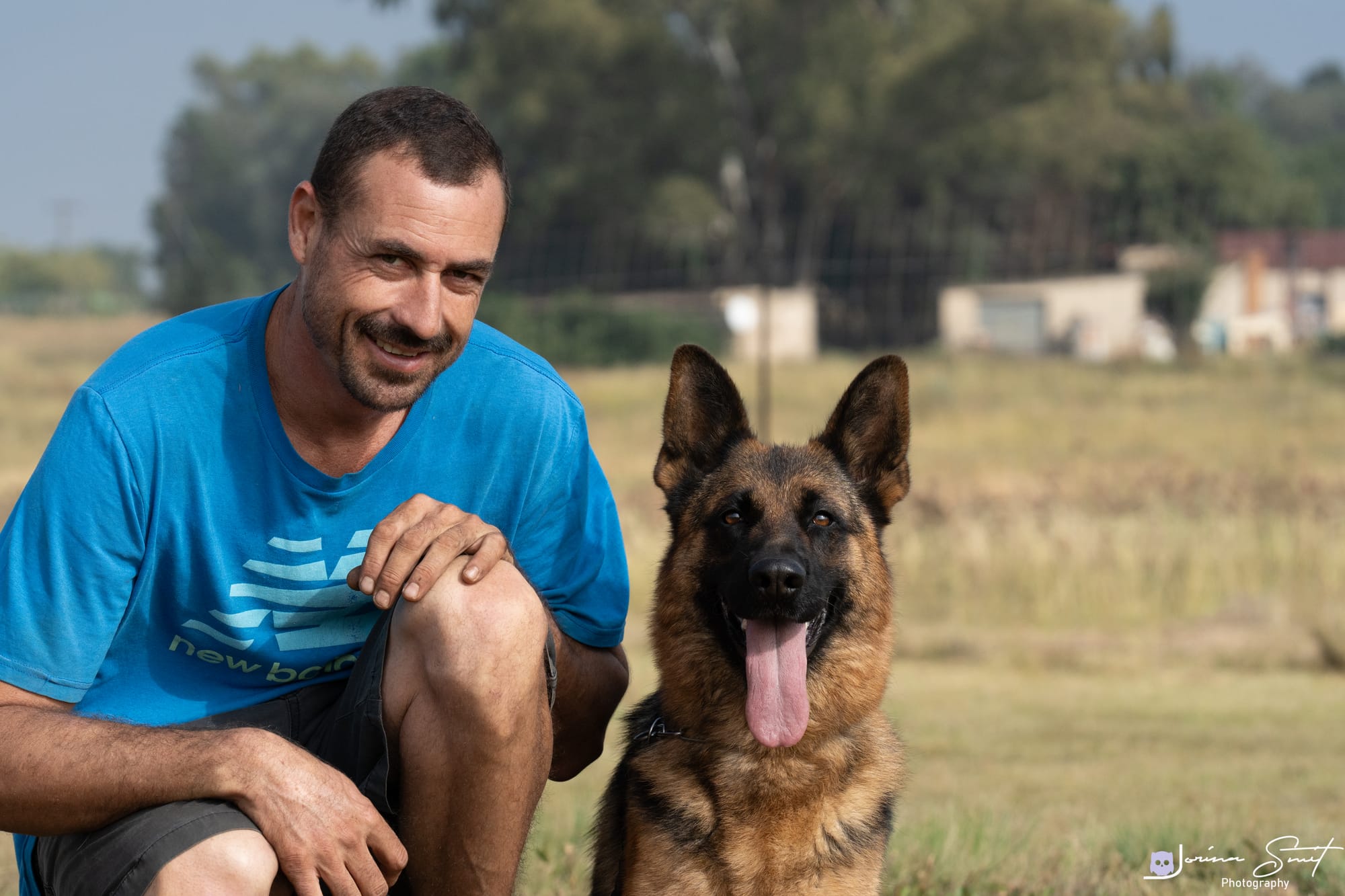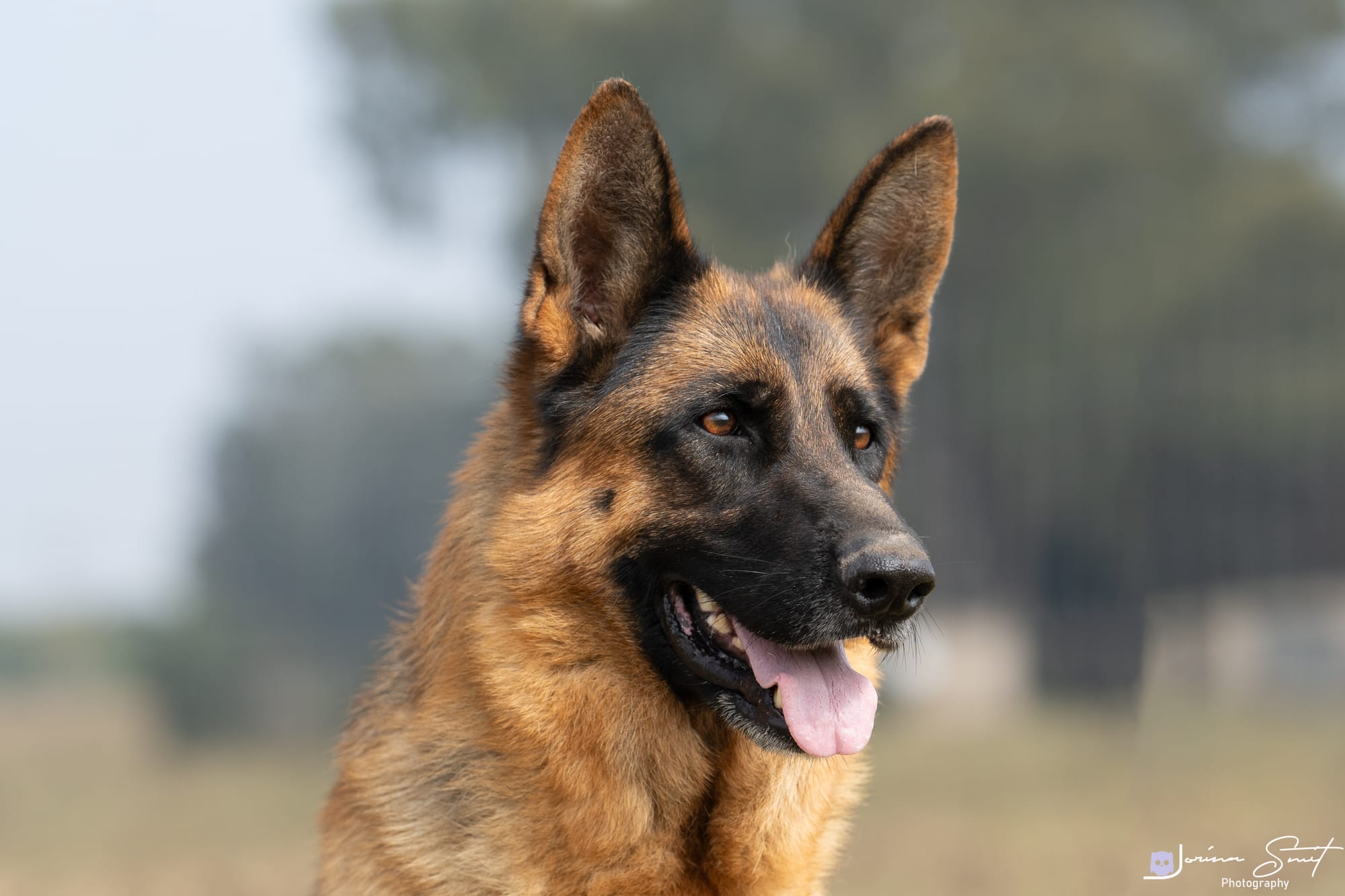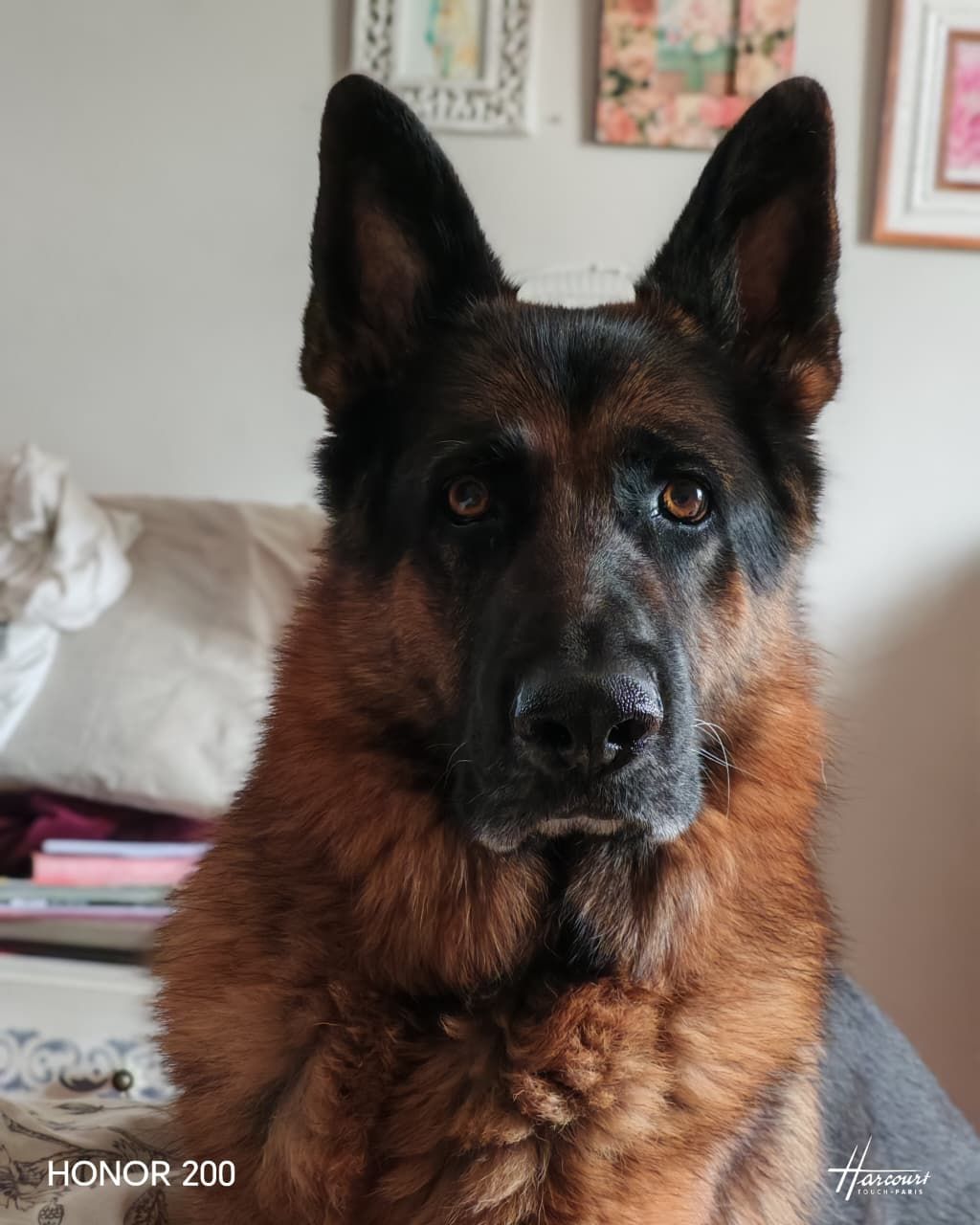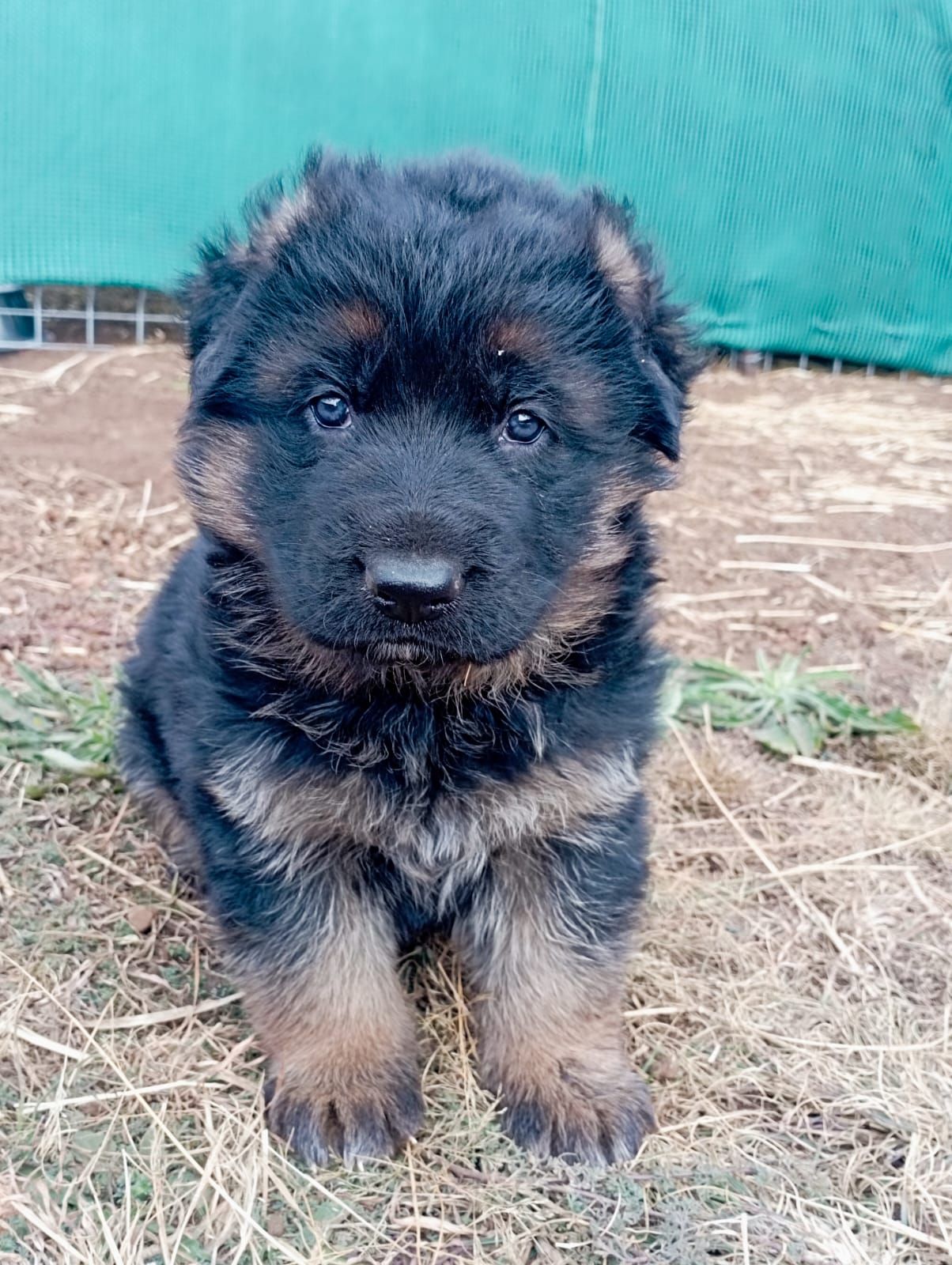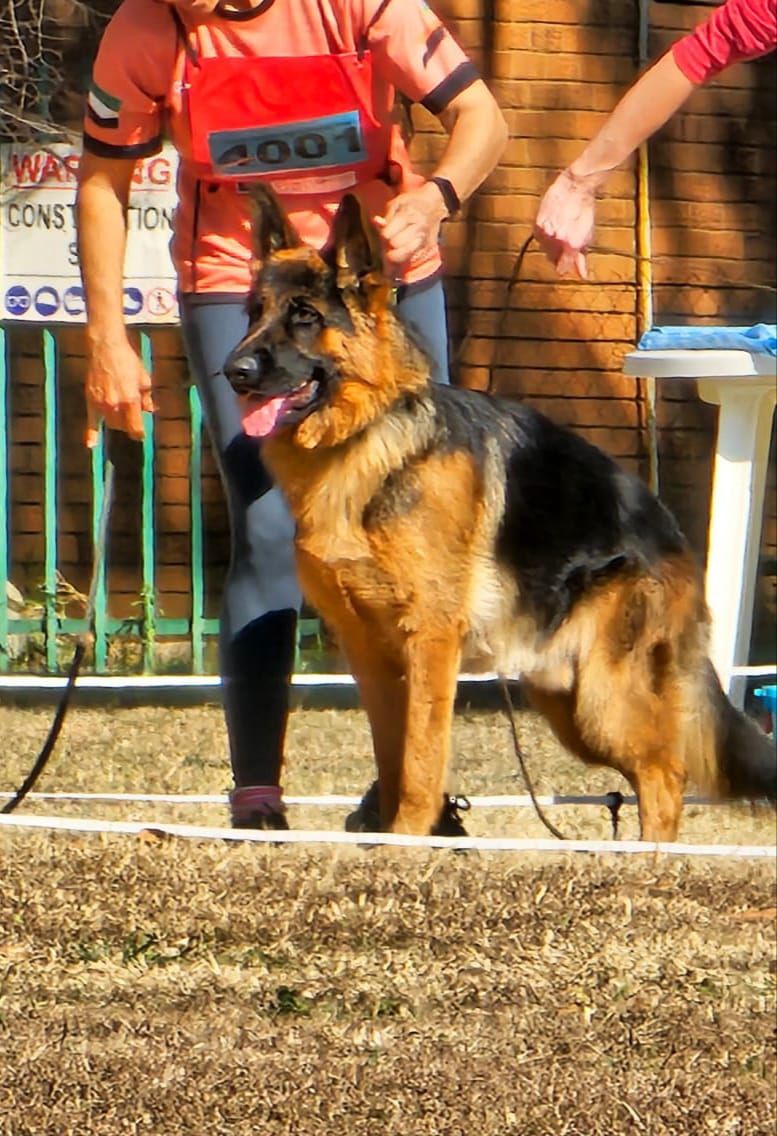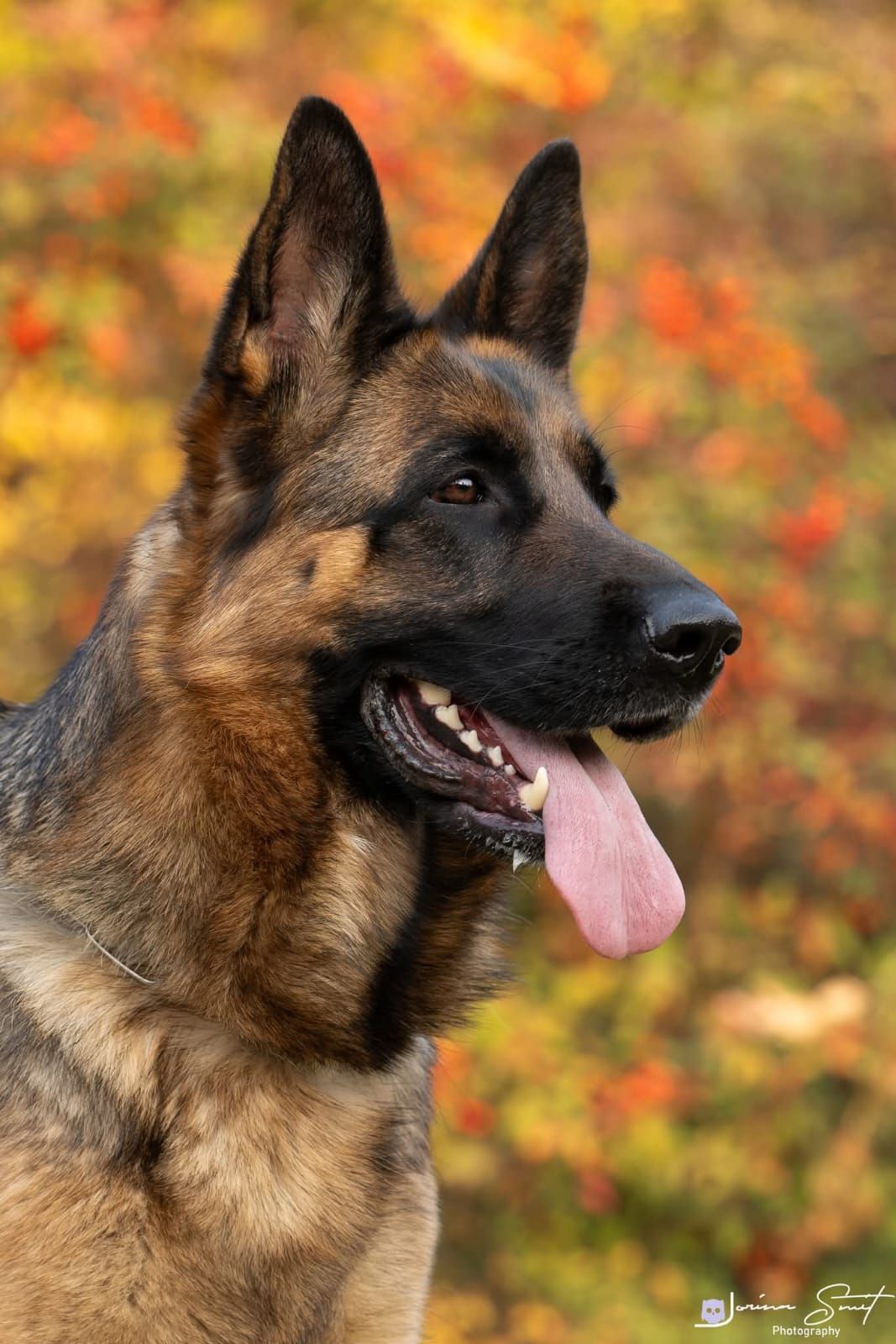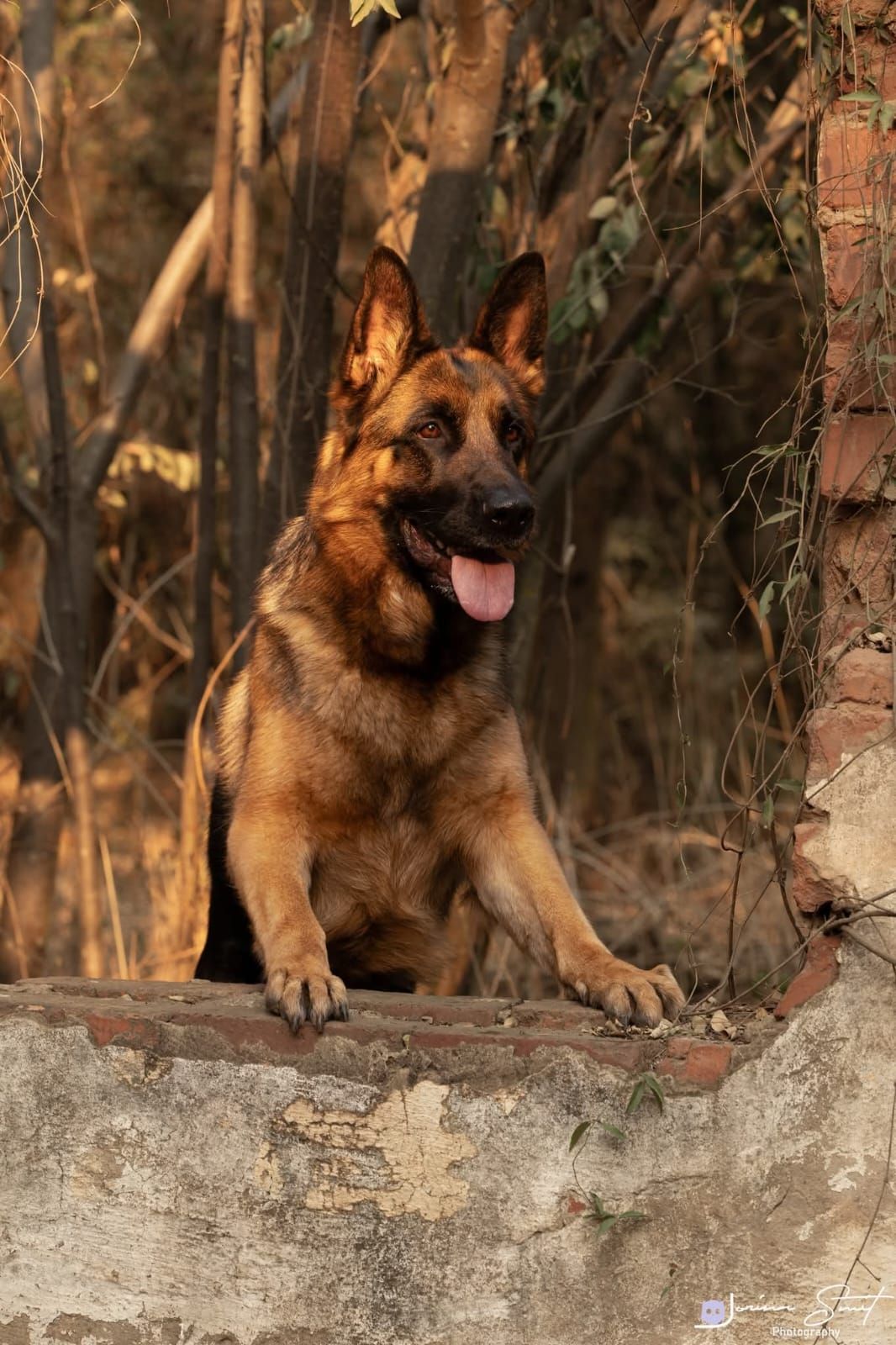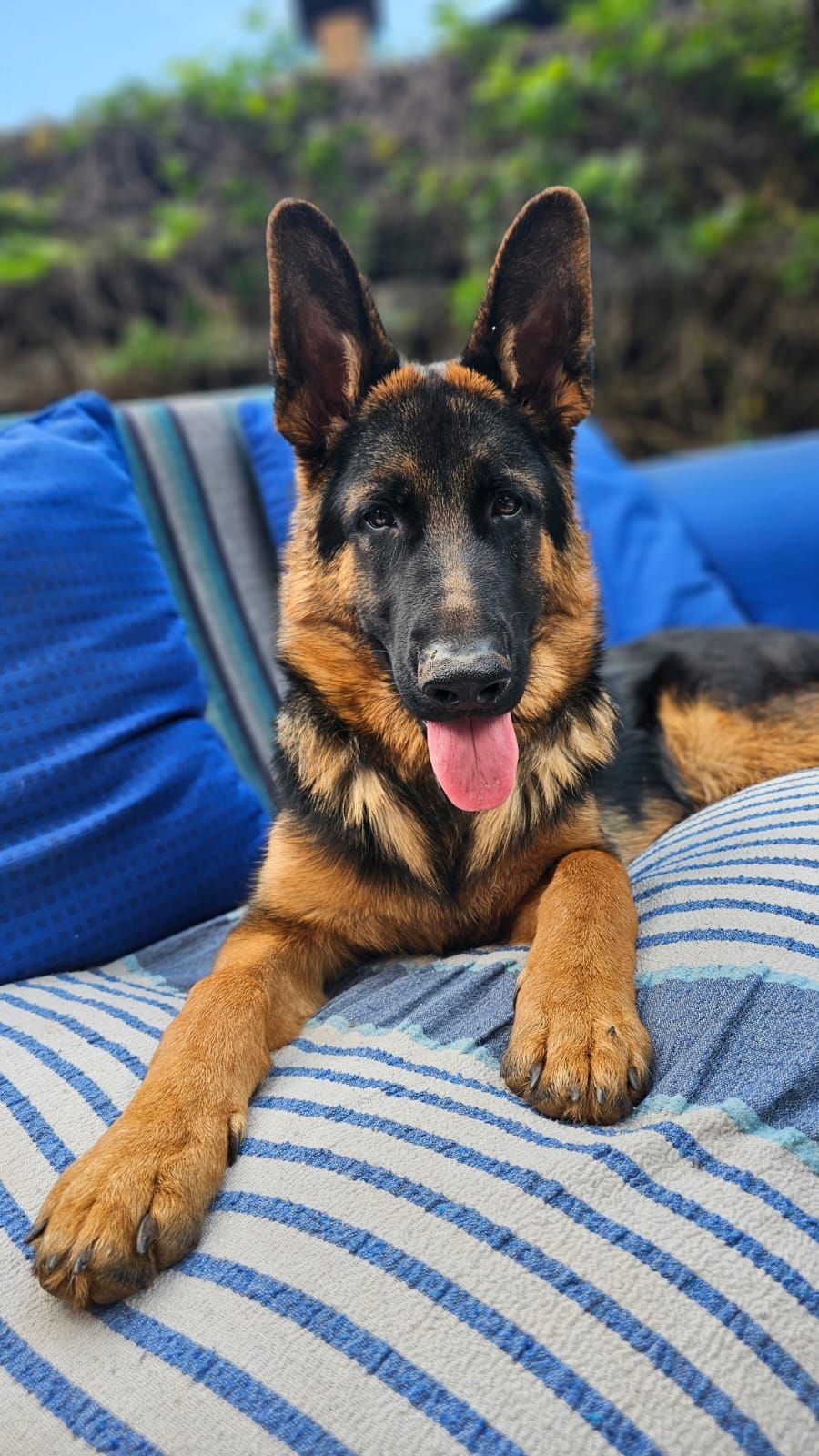Sandferra German Shepherds
Breeders of Distinction since 1995
Gold medal breeder.
Stud Dogs
Winzor von Sandferra
(A+ Hips, AD, BH, IBGH1, DNA Proven, Breed surveyed for life) A Large powerful substantial male that is very well pigmented. Powerful, well formed head. High whither, straight back with good hind angulation. Balanced chest proportions and good underline. Balanced side gait. Firm character. A male with correct size and excellent masculinity.
Cain von Sandferra
Top Quality male with German bloodlines. Has A+ Hip grading DNA Proven Placed 2nd (class 18-24month) Large male with a strong temperament From imported German stock.
Zeus Ragnarok Von Sandferra
(A+ Hips, Elbows Clear, AD, BH, V, DNA Proven, Breed surveyed 2025-2027) Medium size, Medium strong, Substantial , Good body proportion, Good pigmentation. Very good head and expression. High wither, straight back with very good hind angulation. Balanced side gait with very good ground coverage. Drive, self assured and stress tolerance.
Breeding Females
INFO & FACTS
Hip Dysplasia Facts
By Frkkie van Kraayenberg BSc(Genetics) and MSc(Mammalogy) Univ. of Pretoria.
1.
The term Hip Dysplasia (HD) refers to a developmental abnormality within the hip joints, which may vary from insignificant to debilitating. Hence all schemes are based on a graduated scale of severity. Many old dogs have arthrosis within the hip joints which is unrelated to Hip Dysplasia, which is often incorrectly interpreted as such.
2.
Nearly all breeds of dogs are affected by HD. The Authoritative Orthopedic Foundation for Animals list 39 breeds of dogs with a higher incidence of HD than the German Shepherd Dogs.
3.
Only a very small proportion of the German Shepherd Dogs, certainly less than 1%, develop clinical symptoms, i.e. show lameness due to HD, before old age.
4.
There is no correlation between radiologically diagnosed HD and the development of clinical symptoms in German Shepherd Dogs. Many dogs diagnosed with even severe HD never show a day's lameness or discomfort their entire lives.
5.
More than 90% of young German Shepherd Dogs that fail the Federation's HD scheme due to looseness in the hip joints without accompanied arthritis, pass the scheme if they re-examined a year later.
6.
HD is not necessary genetic in origin and may even be caused by you, the owner.
Some environmental causes may be due to the following:
A. Incorrect feeding, Especially:
i. Imbalance of calcium
ii. Feeding foods to high in protein often result in to high growth rate.
iii. Overweight due too to much, or incorrect feeding.
B. Too much, especially forced exercise before the age of 122 months.
C. Physical injuries to puppies.
i. Running through a doorway and bashing the hips.
ii. climbing over/or under fences.
iii. rough play from human or animals.
iv. Doing splits on tile floors
v. Jumping up and down furniture or high vehicles.
7.
Vast majority of diagnosis made by non-expert vets submitted to the Federation for evaluation turn out to be incorrect.
8.
Positioning for the X-Ray is critical. Incorrect positioning is the most important cause of misdiagnosis, particularly HD related to subluxation(Looseness).
For many years the German Shepherd Dog Federation was the only registering authority in South Africa with a compulsory HD scheme which dogs had to pass before breeding. The scheme has been running since 1984. During this time, X-Rays of more than 10,000 have been examined.
Because of non-expert vets.
Crate Training
🐾 Is Crate Training a Good Thing?
Absolutely — crate training, when done correctly, is a great tool for both you and your puppy. While some worry that crating is restrictive or cruel, the truth is that:
A crate can provide your puppy with a sense of security, structure, and a safe space — much like a den in the wild.
However, it should never be used as punishment, and puppies should never be crated all day. German Shepherds are active, intelligent, and high-energy, especially during their early months, so they need lots of exercise and interaction.
✅ Benefits of Crate Training:
- Helps your puppy feel safe and secure
- Aids in house-training
- Keeps your puppy safe when you can’t supervise
- Protects your belongings
- Provides a break for you when needed
- Useful for travel and vet visits
There are three common types:
1. Wire Crates
- Strong and durable
- Good ventilation
- Collapsible for storage
- Preferred for German Shepherds
- Great for travel
- More enclosed (can feel den-like)
- Harder to clean
- Lightweight and portable
- Not ideal for chewers or energetic puppies
Get a 42- to 48-inch crate with a divider. This lets the crate "grow" with your puppy without giving too much room at first (which can lead to accidents).
Include inside the crate:
- A durable crate mat (not too soft or destructible)
- A couple of favorite toys
- A few treats
- A crate cover for privacy and calmness when needed
Step 1: Create a Positive Association
- Place the crate in a familiar room
- Keep the door open
- Let your puppy sniff and explore freely
- Toss in some treats or toys to encourage entry
- Never force your puppy into the crate
- Feed your puppy meals near the crate
- Gradually move the food bowl inside — starting near the door, then further back each time
- Praise your puppy for entering the crate
- Once your pup is eating inside comfortably, gently close the door during meals
- After the meal, open it right away
- Gradually increase the time the door stays closed
Positive reinforcement is everything!Use small training treats and verbal praise every time your pup shows comfort or progress.
If your puppy starts whining, you may be moving too fast. Take a step back.
⏳ What About Longer Periods?
When your puppy seems confident in the crate:
- Start with short crate sessions while you’re home
- Leave the room for a few minutes
- Come back calmly and let your puppy out quietly
- Don’t go from 1 hour to 8 hours suddenly
- Create a daily routine for crate time and playtime
❌ Never use the crate as punishment❌ Don’t scold or yell if crate time isn’t going smoothly❌ Don’t crate for more than a few hours during the day (except overnight once fully trained)
🐕 Final Thoughts
Crate training takes time, patience, and consistency. Your German Shepherd is highly intelligent and will catch on — just make sure you go at your puppy’s pace.
If progress stalls or your pup seems unusually distressed, consider speaking to a vet or trainer to rule out any health or behavioral concerns.
Puppy Exercise
You should never let your puppy jump, walk up/down stairs, over exercise or over train.
Doing too much impact activity at a young age will cause serious issues later in life, or even at a young age.
Remember the puppy rule:
For every month increase activity by 5 minutes!
For example an 8 week old puppy only needs 10 minutes
physical activity a day!
A 6 month old only needs 30 minutes a day of
physical activity!!
Physical activity includes – going for a walk (on soft terrain and the time includes the return trip), training, playing fetch, running, playing with other dogs etc.
Enjoy your new puppy but remember you wouldn’t make a 6 month old baby run a mile a day so don’t make your puppy either!
Maren von der Heyde, Zwinger von der Weidenstrasse, November 2015
Puppy Stages
The Transitional Stage 2-3 Weeks The Transitional stage generally lasts from age two to three weeks, and it’s during this time that your puppy’s eyes will open, and he’ll slowly start to respond to light and movement and sounds around him. He’ll become a little more mobile during this period, trying to get his feet underneath him and crawling around in the box. He’ll start to recognize mom and his litter mates, and any objects you might place in the box.
Stage 2:
The Almost Ready To Meet The World Stage 3-4 Weeks The Almost ready to meet the world stage lasts from 3 to about 4 weeks, and your puppy undergoes rapid sensory development during this time. Fully alert to his environment, he’ll begin to recognize you and other family members. It’s best to avoid loud noises or sudden changes during this period – negative events can have a serious impact on his personality and development right now. Puppies learn how to be a dog during this time, so it is essential that they stay with mom and litter mates.
The Overlap Stage 4-7 Weeks From 4-7 weeks your puppy begins the most critical social development period of his life – he learns social interaction with his litter mates, learns how to play and learns bite inhibition.
He will also learn discipline at this point! Mom will begin weaning the pups around this time, and will start teaching them basic manners, including accepting her as the leader of the pack. Continue to handle the pups daily, but don’t separate them from either Mom or litter mates for more than about 10 minutes per day. Puppies that are removed from the nest too early are frequently nervous, more prone to barking and biting and have a more difficult time with socialization and training. Puppies need to be left with Mom and siblings until at least 7 weeks of age - and preferably a little longer - for optimum social development. Experts say that the best time in a puppy’s life to learn social skills is between 3 and 16 weeks of age – that’s the window of opportunity you have to make sure your puppy grows up to be a well-adjusted dog. It’s extremely important to leave your puppy with Mom and his litter mates during as much of this period as possible. Don’t discipline for play fighting, housebreaking mistakes or mouthing – that’s all normal behavior for a puppy at this stage.
The “I’m Afraid of Everything” Stage 8 Weeks to 3 Months The “I’m Afraid of Everything” Stage lasts from about 8 weeks to 3 months, and is characterized by rapid learning as well as a “fearful period” that usually pops up at around 8 to 10 weeks. Not all dogs experience this, but most do, and they’ll appear terrified over things that they took in stride before. This is not a good time to engage in harsh discipline (not that you ever should anyway!), loud voices or traumatic events. At this time your puppy’s bladder and bowels are starting to come under much better control, and he’s capable of sleeping through the night. (At last, you can get some rest!) You can begin teaching simple commands like: come, sit, stay, down, etc. Leash training can begin. It’s important not to isolate your puppy from human contact at this time, as he’ll continue to learn behaviors and manners that will affect him in later years.
Stage 5:
The Juvenile Stage 3 Months to 4 Months The Juvenile stage typically lasts from 3 to 4 months of age, and it’s during this time your puppy is most like a toddler. He’ll be a little more independent - he might start ignoring the commands he’s only recently learned – just like a child does when they’re trying to exert his new-found independence. As in “I don’t have to listen to you!” Firm and gentle reinforcement of commands and training is what’s required here. He might start biting you – play biting or even a real attempt to challenge your authority. A sharp “No!” or “No bite!” command, followed by several minutes of ignoring him, should take care of this problem. Give him toys to play with and play chase and tug of war games, preferably with a cloth or rubber object tied to a length of cord. Distract him with these games when he turns his attention to you i.e. jumping you, biting your hands, arms, feet, etc. Wrestling is a game that can rapidly get out of hand. As your puppy’s strength grows, he’s going to want to play-fight to see who’s stronger – even if you win, the message your puppy receives is that it’s ok to fight with. And that’s not ok!
The Brat Stage 4-6 Months The “Brat” Stage starts at about 4 months and runs until about 6 months, and it is during this time your puppy will demonstrate even more independence and willfulness. You may see a decline in his urge to please you – expect to see more “testing the limits” type of behaviors. He’ll be going through a teething cycle during this time, and will also be looking for things to chew on to relieve the pain and pressure. Frozen doggie bones can help sooth him during this period. He may try to assert his new “dominance” over other family members, especially children. Continue his training in obedience and basic commands, but make sure never to let him off his leash during this time unless you’re in a confined area. Many times pups at this age will ignore commands to return or come to their owners, which can be a dangerous, even fatal, breakdown in your dog’s response to you. If you turn him loose in a public place, and he bolts, the chances are that injury or even death can result – so don’t take the chance.
Stage 7:
The Young Adult Stage 6-18 Months The Young Adulthood stage lasts from 6 months to about 18 months, and is usually a great time in your dog’s life - he’s young, he’s exuberant, he’s full of beans – and yet he’s learning all the things he needs to become a full-fledged adult dog. Be realistic in your expectations of your dog at this time – just because he’s approaching his full growth and may look like an adult, he’s not as seasoned and experienced as you might expect. Gradually increase the scope of activities for your dog, as well as the training. You can start more advanced training during this period. Otherwise, extend his activities to include more people and other animals – allow him to interact with non-threatening or non-aggressive dogs.
Maren von der Heyde, National Breed Supervisor
March, 2012
New puppy owners
- Drives that are not inherently present, cannot be created.
- Drives that are inherently present, can be further developed through training.
- Strongly pronounced or undesirable drives cannot be extinguished, but only reduced by training.
- The temperament of a dog (i.e.: his individual responses to stress) cannot be changed but only influenced by training.: “The dog is, who he is”
A dog does not understand and is unable to process human speech & reasoning, consequently his training is only successful when:
- He is not “humanized”.
- The particular essence of his animal character is remembered.
- He is taught to understand certain behaviour is required in certain situations.
- When he is made to understand how to behave in certain situations by way of positive reinforcement when correct, & negative reinforcement when incorrect.
(definitions for training purposes, not from academic ethology)
- Food Drive: the dogs desire to persist in getting food – not always hunger related.
- Play Drive: the dogs obsession with objects & his desire to entertain himself actively.
- Prey Drive: the dogs intensity in chasing anything moving away – catching, biting & carrying it.
- Fight Drive: the dogs desire to initiate & persist in confrontation, both physical and mental.
- Pack Drive: desire to work with the handler & be part of the ream.
- The dog must have the drive to do the work.
- You must understand how to activate the drive.
Contact Us
- Gardenvale AH, South Africa
 +27-824638441 - Sandra Ferreira
+27-824638441 - Sandra Ferreira +27-640157743 - Philip Helberg
+27-640157743 - Philip Helberg- sandferra@gmail.com
- Mon-Sun - 08:00-17:00

